Glinting panes can make a balcony feel limitless, but great design goes further—balancing safety, climate control, wildlife protection, and year-round usability. From frameless expanses that erase visual boundaries to retractable systems that seal out winter winds in seconds, glass balcony innovation has multiplied in the past few years. Case-study data highlights how tempered and laminated panels outperform traditional rails on impact resistance, how smart coatings shave cooling loads, and how bird-safe patterns preserve views while saving avian life. With the right choice, a glass balcony becomes more than a barrier—it becomes a living feature that lifts property value and daily mood alike.
1. Frameless Glass Balcony for Unbroken Vistas
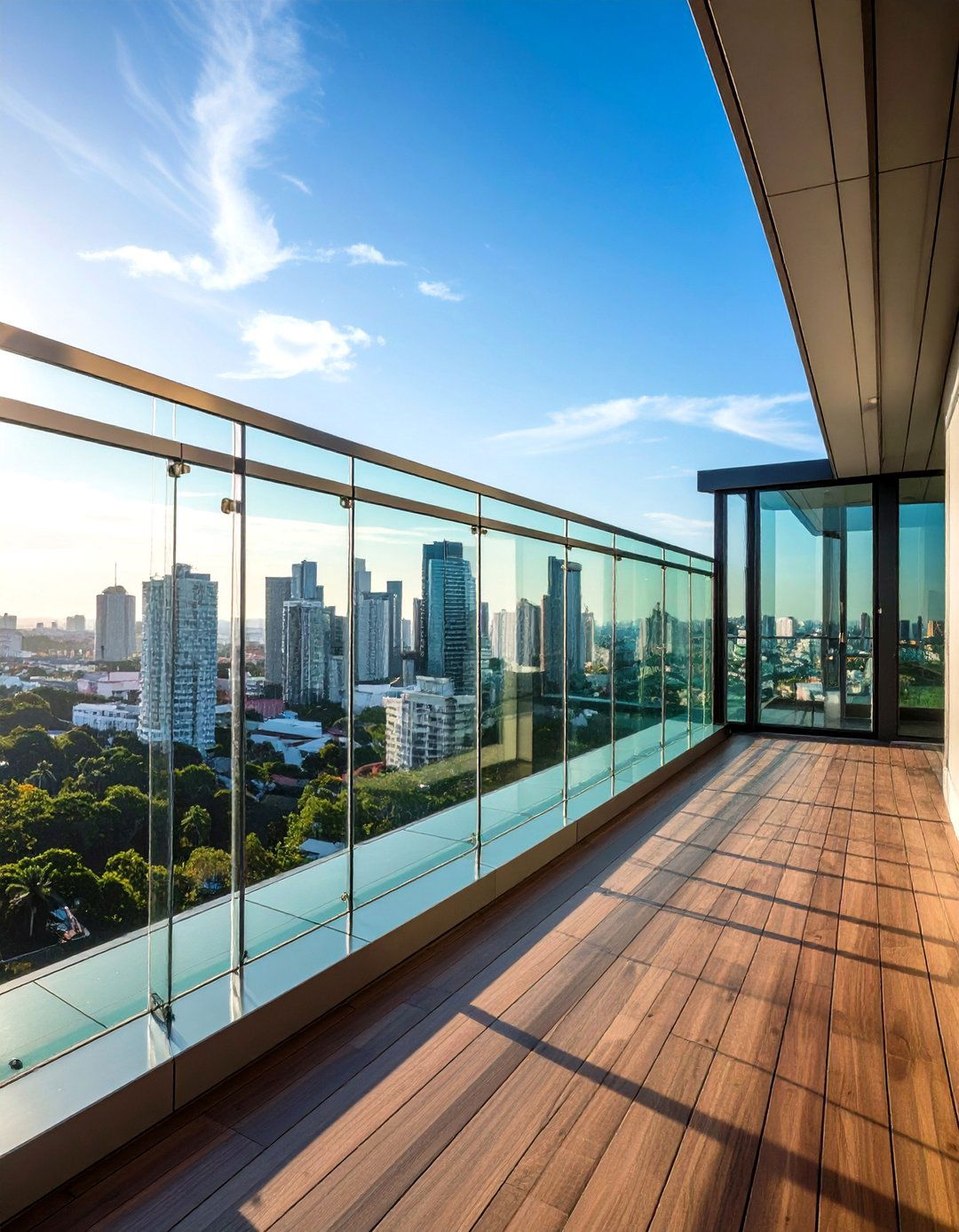
A frameless glass balcony eliminates bulky uprights, letting skyline or garden scenery flood your peripheral vision and lending the illusion of a hovering platform. Toughened panels anchored in slim base shoes withstand high wind loads yet keep edges clean for minimalist interiors. Because there is zero top rail, the design also admits more daylight into adjoining rooms, reducing reliance on artificial lighting. Industry testing shows frameless systems using 12–17 mm tempered glass meet the same code requirements as steel balustrades when properly engineered, so you gain drama without sacrificing safety.
2. Frosted Glass Panels to Guard Urban Privacy
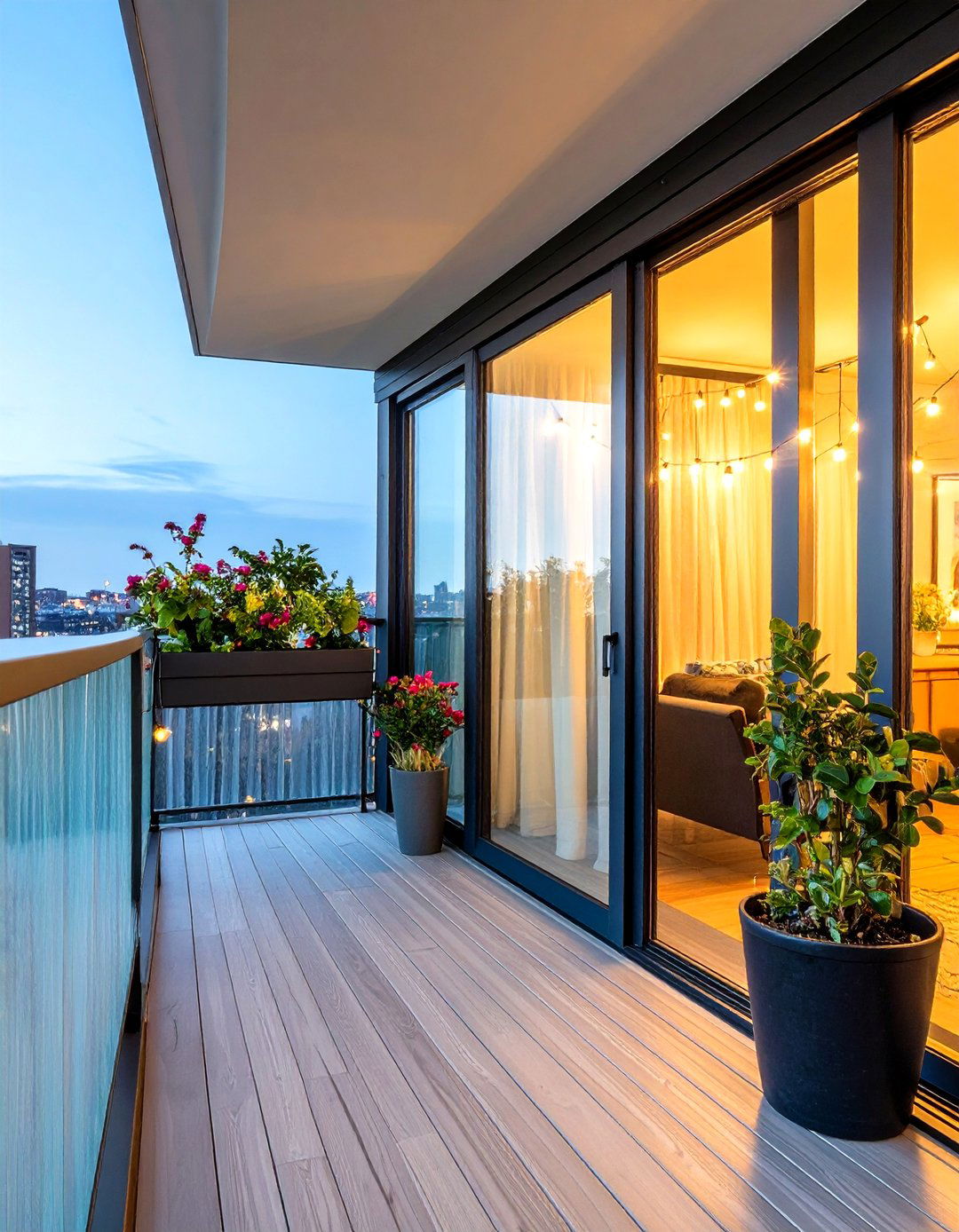
Unlike traditional curtains that billow and mildew, frosted or acid-etched glass gives constant seclusion while diffusing glare into a gentle glow. Privacy levels vary from translucent stripes to full matte sheets, so you can tailor sightlines for crowded city blocks or overlook neighbors humanely. The etched layer bonds into the glass surface, meaning it will never peel the way adhesive films can. Pairing a frosted glass balcony with planter boxes or string lights creates a cocooned nook that still feels airy—ideal for morning coffee without street eyes locking on.
3. Tinted Glass Railings for Glare Control
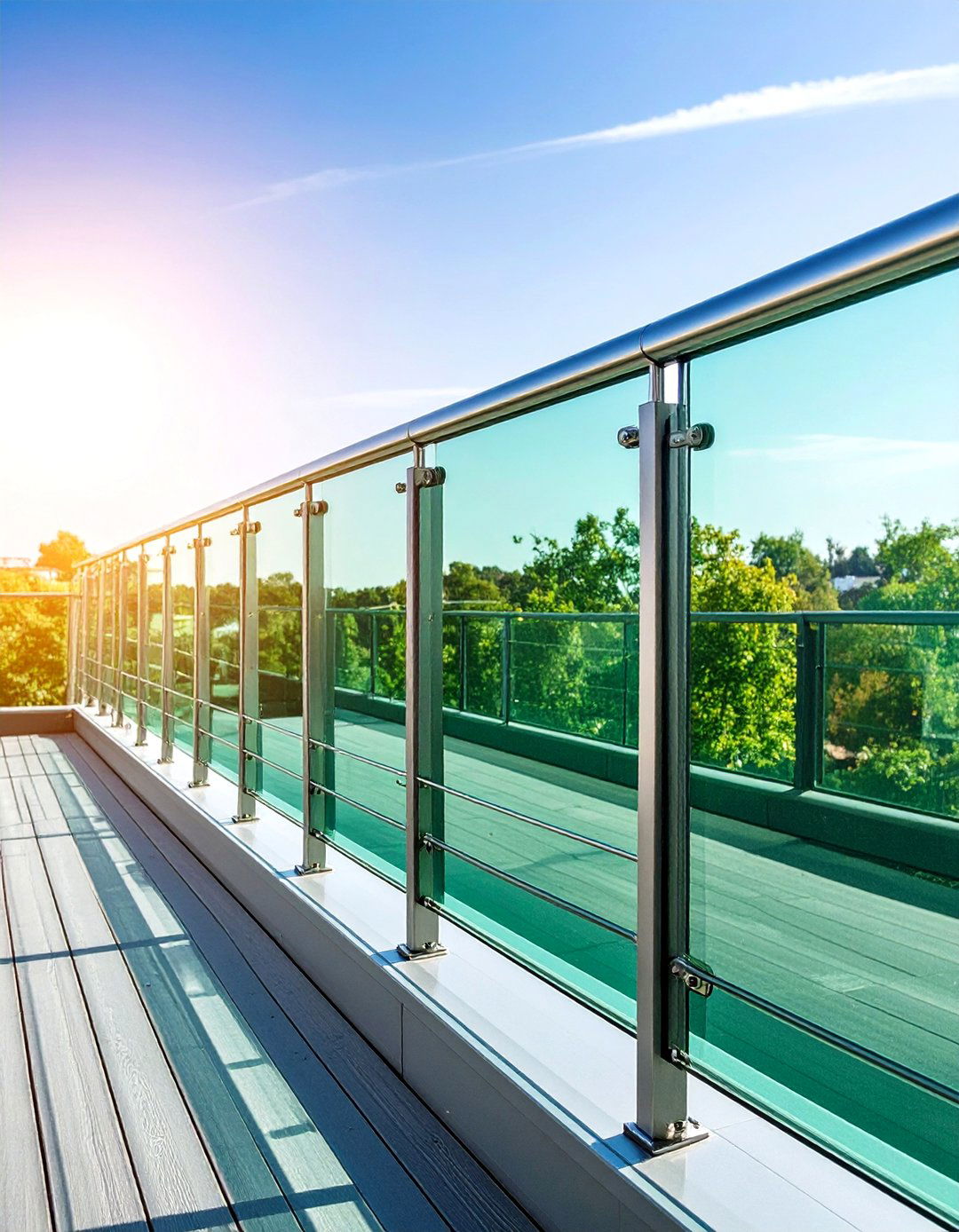
When afternoon sun ricochets off surrounding façades, green-gray or bronze-tinted glass absorbs excess solar gain and softens harsh reflections. Field measurements show tinted panels can cut perceived glare by up to 40 % while only trimming visible light 10–15 %, keeping spaces bright yet comfortable. They also add subtle color that ties balcony glazing to window coatings for a cohesive façade. Choose heat-strengthened or laminated tints to maintain structural performance; advanced interlayers now resist fading for decades under UV exposure.
4. Curved Glass Balconies that Embrace the View
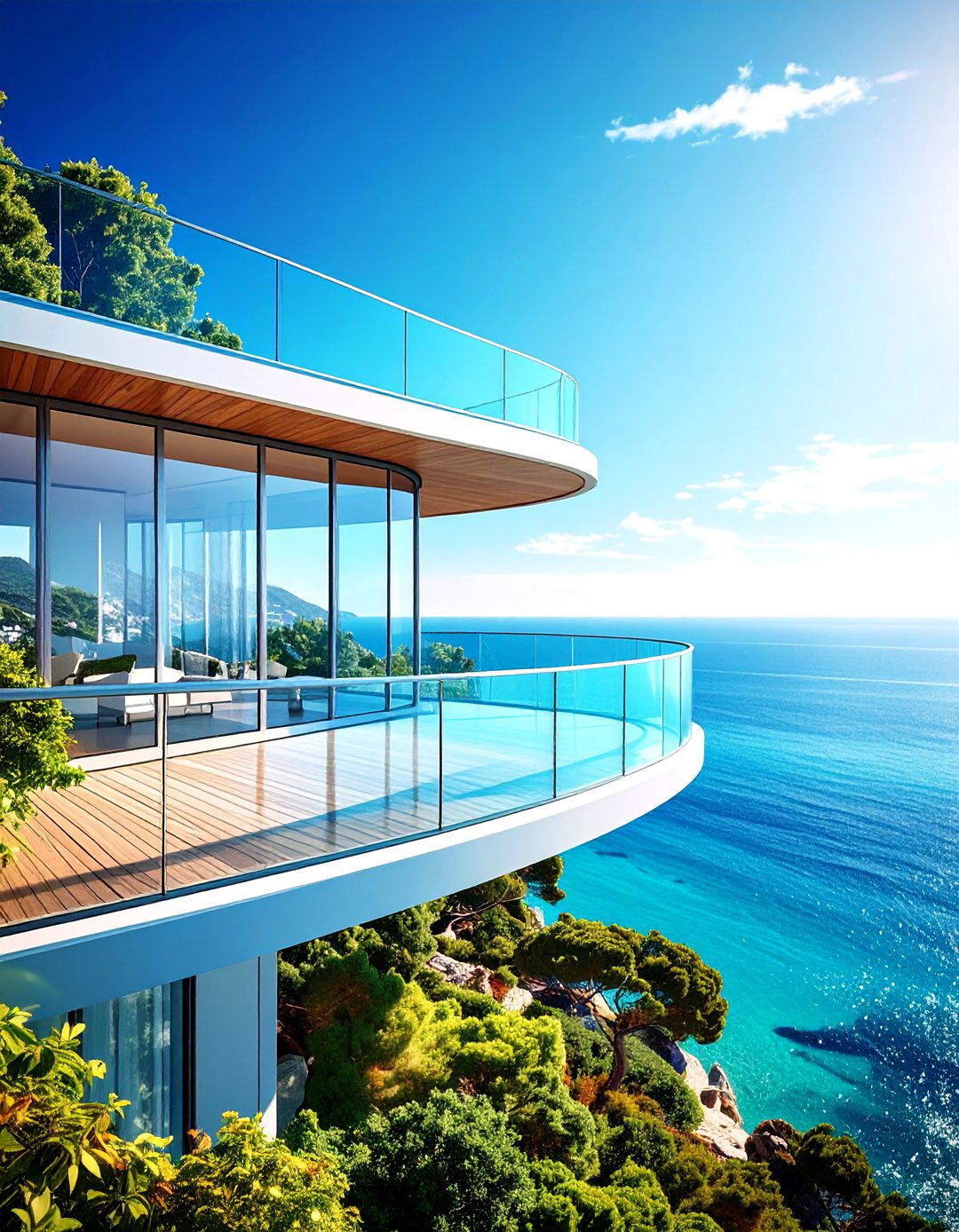
For coastal condos or rounded corner towers, cold-bent or laminated-curved glass follows the building’s sweep, creating a seamless ribbon edge that amplifies ocean horizons. Radiused panels eliminate the faceted “fish-bowl” look of segmented rails and reduce wind turbulence felt on the deck. Modern fabrication bends glass to radii under two meters while keeping clarity, making organic shapes accessible beyond super-luxury projects. The result is an architectural statement that reads fluid and sculptural from street level.
5. LED-Integrated Glass for After-Dark Drama
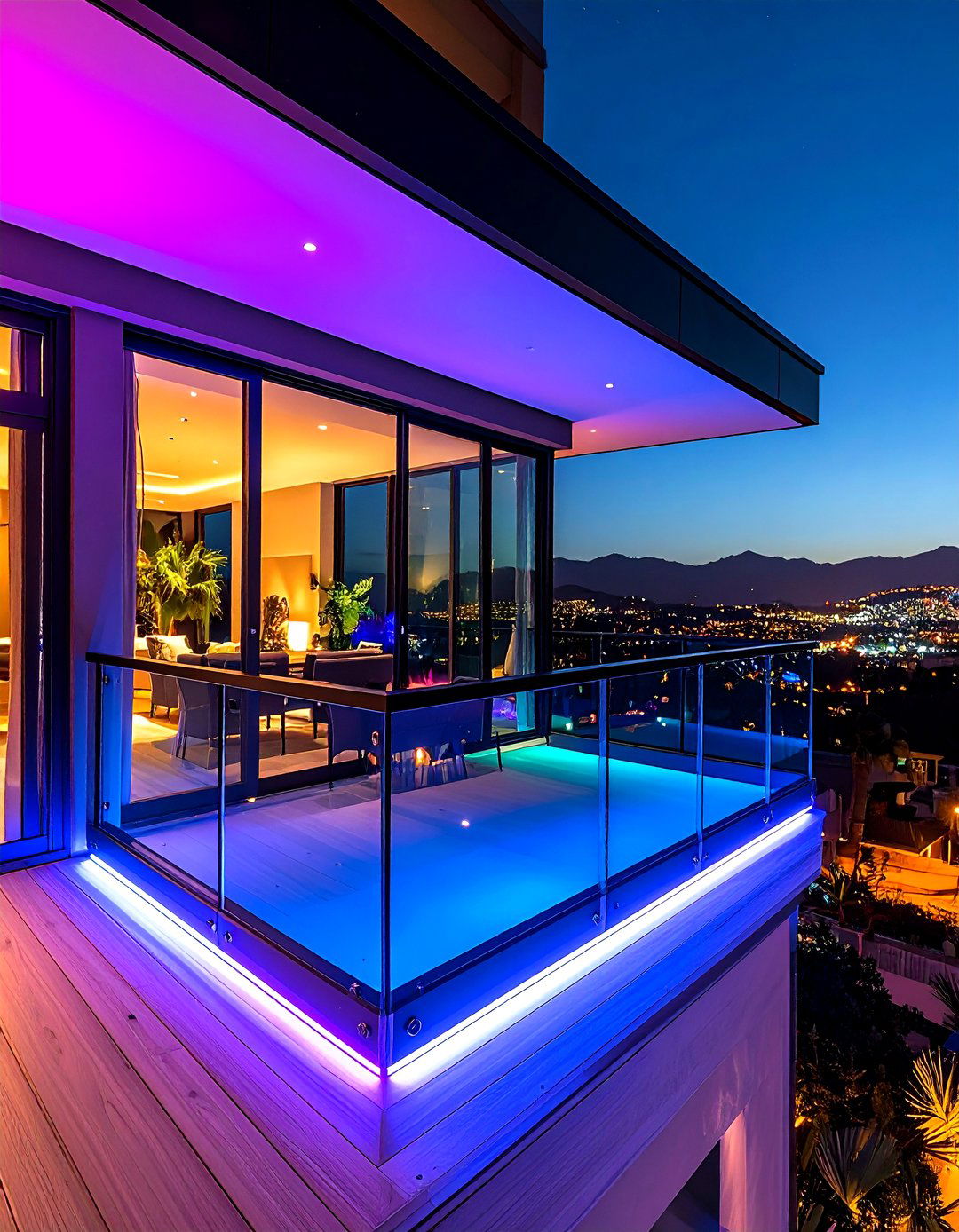
Slender LED channels bonded along glass edges turn the balustrade into a luminous ribbon at night—no bulky fixtures required. Low-watt diodes graze the panel interior, creating an even glow that doubles as pathway lighting and safety marker. Color-changing systems can shift from warm white at dinner to vibrant hues for parties, all controllable from a phone app. Because LEDs emit minimal heat, seals and laminations remain stable, extending balustrade life while boosting curb appeal.
6. Spigot-Mounted Glass for Floating Minimalism
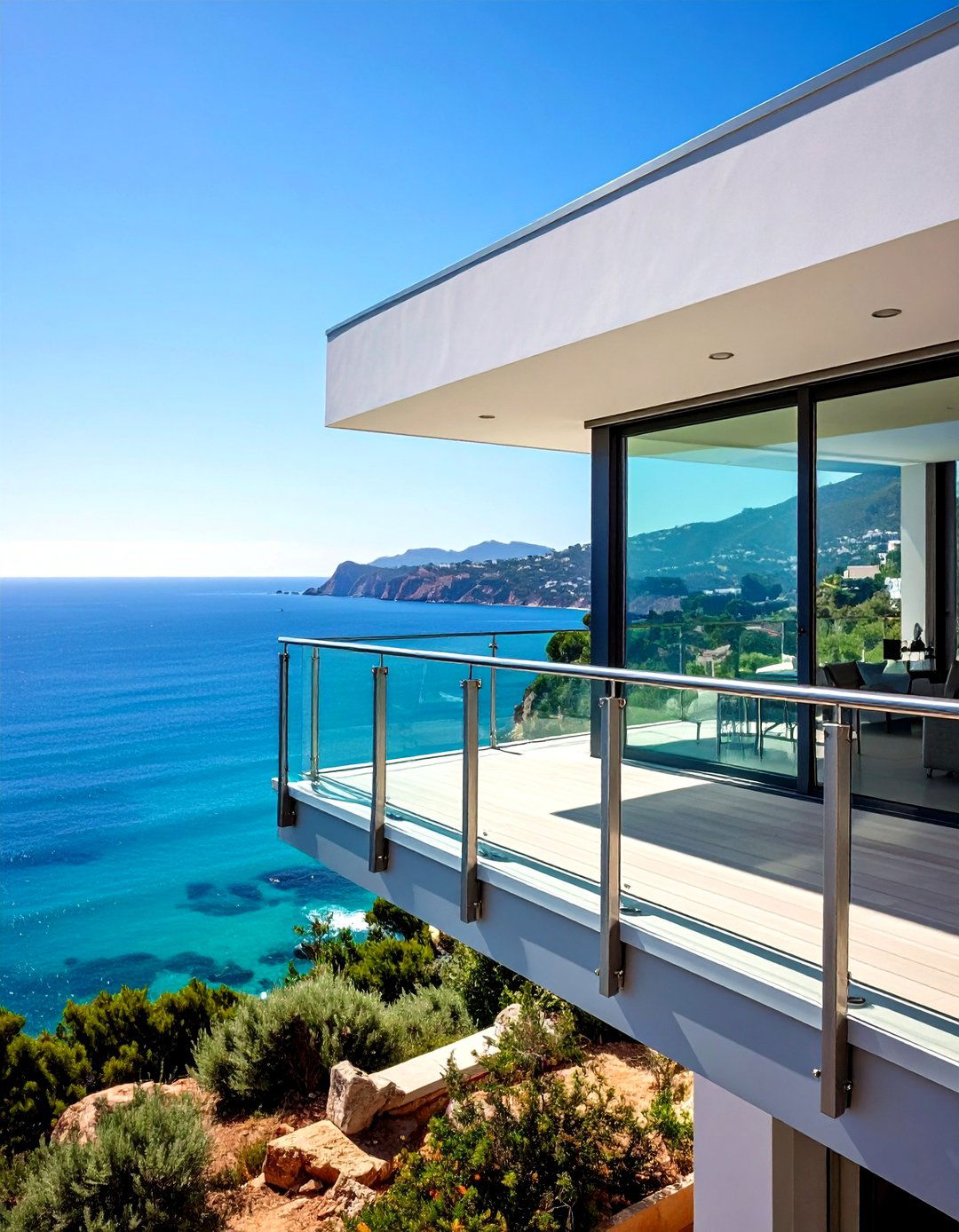
Take, for instance, marine-grade stainless spigots that clamp the bottom of each panel. By side-mounting to the slab fascia, they raise glass clear of the deck and make cleaning easier—all water drains under the pane. Spigots suit retrofits where drilling into the slab top isn’t possible, and their 2205 alloy shrugs off salt spray on coastal balconies. Visual weight stays low, yet laboratory pull-tests record load capacities exceeding typical code requirements.
7. Glass Juliet Balcony for Compact Openings

A slender Juliet balcony guards French doors on upper floors, bringing outdoor ambience to rooms lacking floor space. Toughened glass fixed across the opening maximizes daylight and ventilation while meeting fall-protection codes. Off-the-shelf kits include pre-drilled clamps and discrete top rails so installation often finishes within a day. The upgrade transforms bedrooms into breezy retreats and can bypass zoning hurdles associated with projecting decks.
8. Semi-Frameless Glass with Warm Timber Top Rail
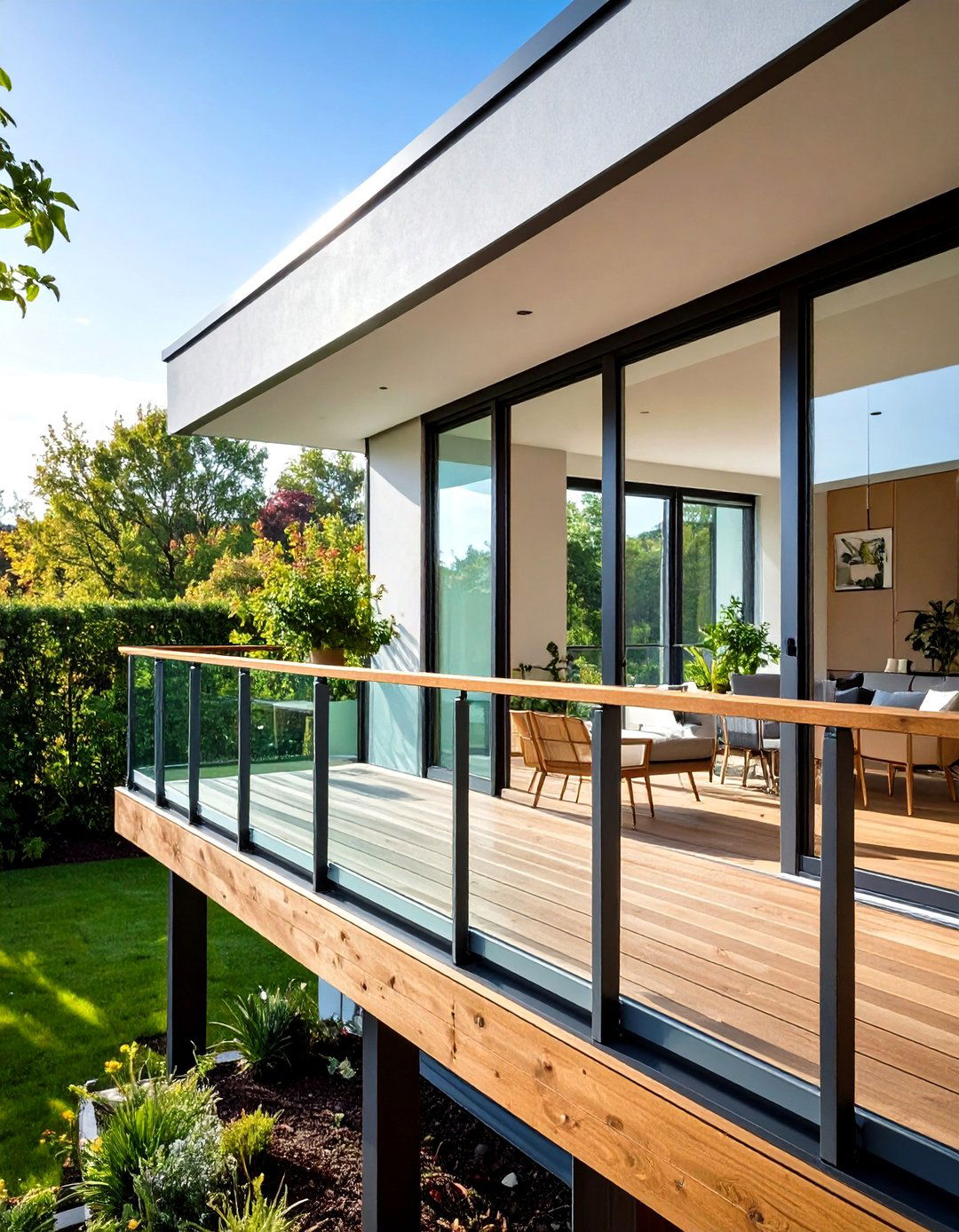
Marrying wood and glass softens modern lines and lends a tactile edge for leaning. A slim timber cap rail protects glass edges from chipping while introducing warmth that ties to decking boards or indoor floors. Because the structural load remains in concealed bottom channels, the timber can be lighter and easier to replace than a full wooden balustrade—ideal for creating a Scandinavian vibe without constant staining of vertical posts.
9. Solar-Control or Photovoltaic-Coated Glass
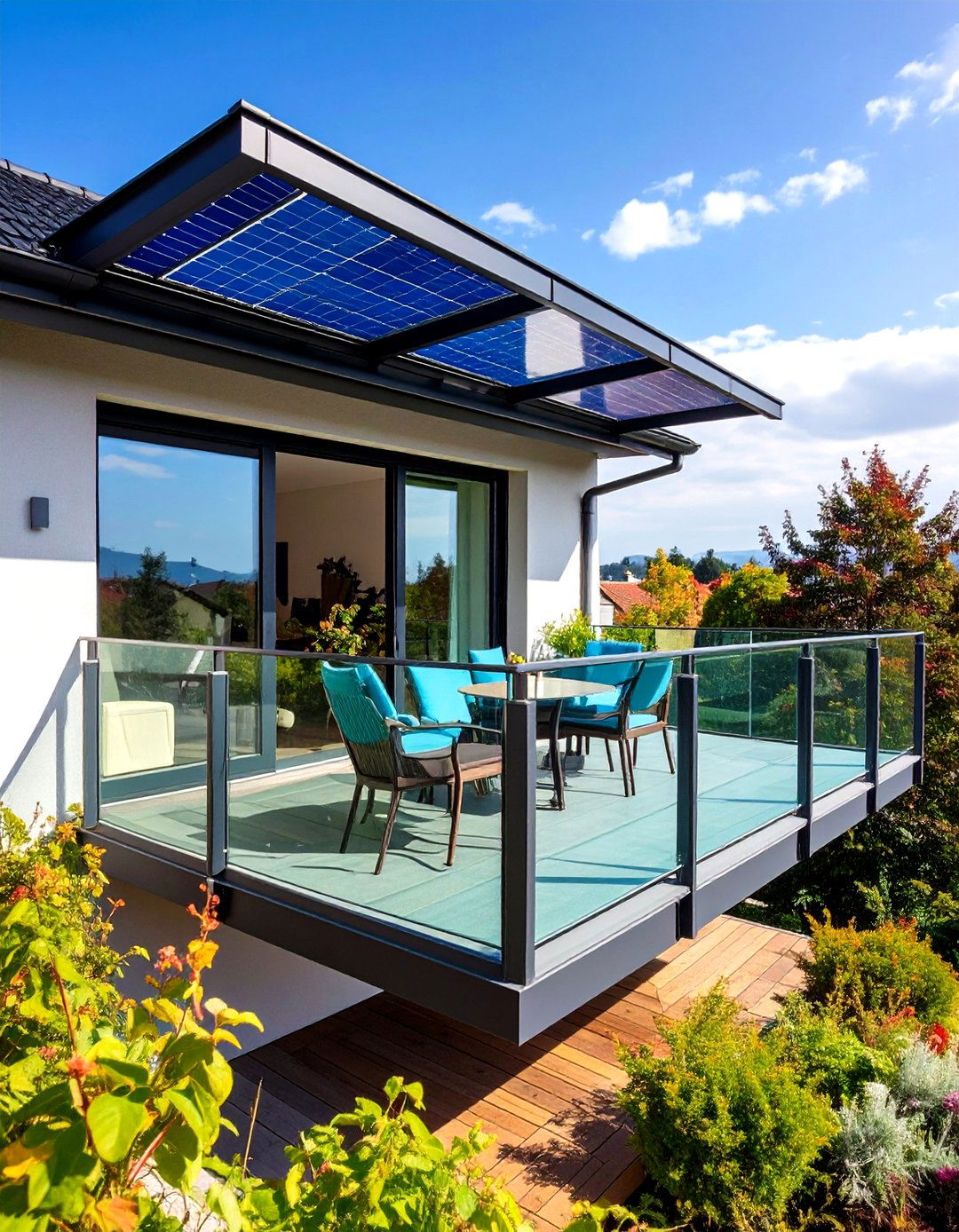
Select glass coated with low-e or solar-control layers to reflect infrared heat and stabilize indoor temperatures, a proven energy saver on sun-soaked façades. Developers are also experimenting with transparent photovoltaic interlayers that generate electricity from the same balcony you sip coffee on—supplying auxiliary power for lights or device charging. Prototype balustrades already achieve meaningful wattage without darkening views, hinting at future self-powered micro-grids in apartment towers.
10. Planter-Edge Glass for Living Green Screens
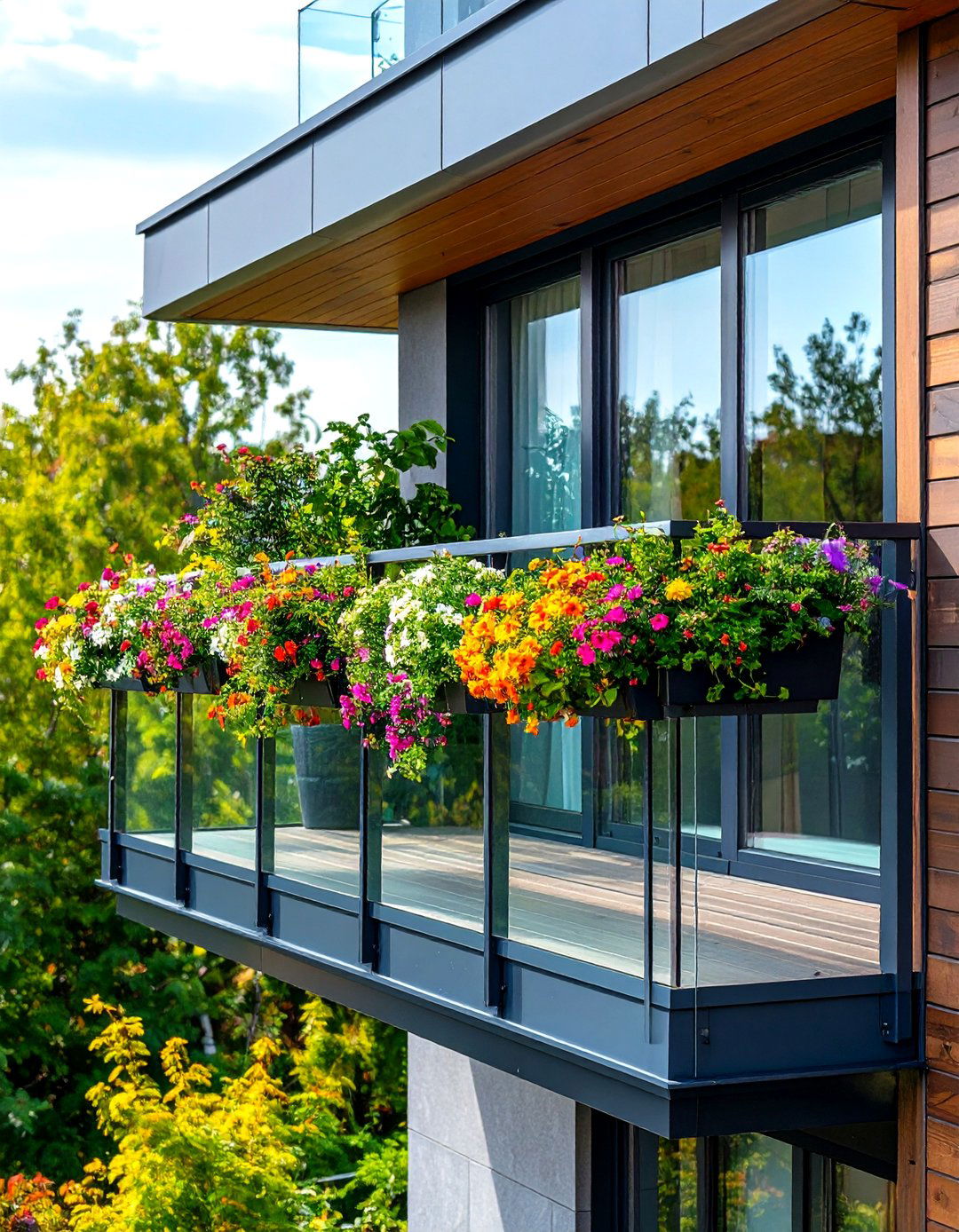
Add steel hooks or custom brackets to hang flower boxes directly on the interior face of a glass balcony. Because glass reflects foliage, plants appear doubled, creating an instant vertical garden while freeing floor area. Adjustable clamps safeguard the pane and support loads up to 50 kg, accommodating tomatoes, herbs, or pollinator blooms that transform sterile elevations into vibrant ecosystems.
11. Switchable Smart Glass for On-Demand Seclusion
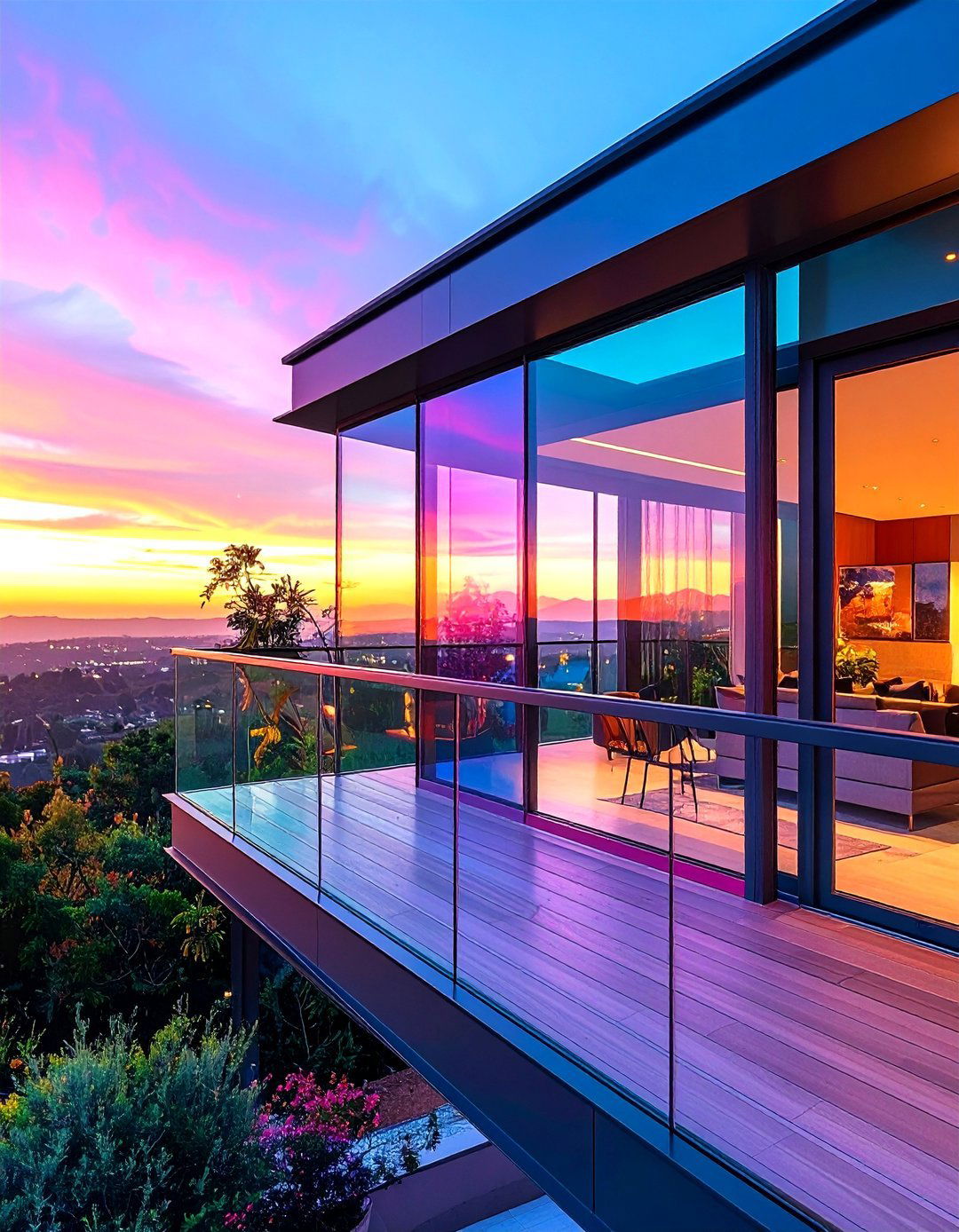
Touch a button and transparent panels cloud to a soft white, blocking prying eyes yet still admitting daylight. Polymer-dispersed liquid crystal (PDLC) films wired into balcony glass switch in under a second and consume power only while opaque. Residential case studies show owners toggling privacy during workouts or when sun angles shift, eliminating fabric shades that flap in winds. The technology integrates with home automation, and retrofit lamination is possible on existing rails.
12. Colored Laminated Glass for Artistic Flair
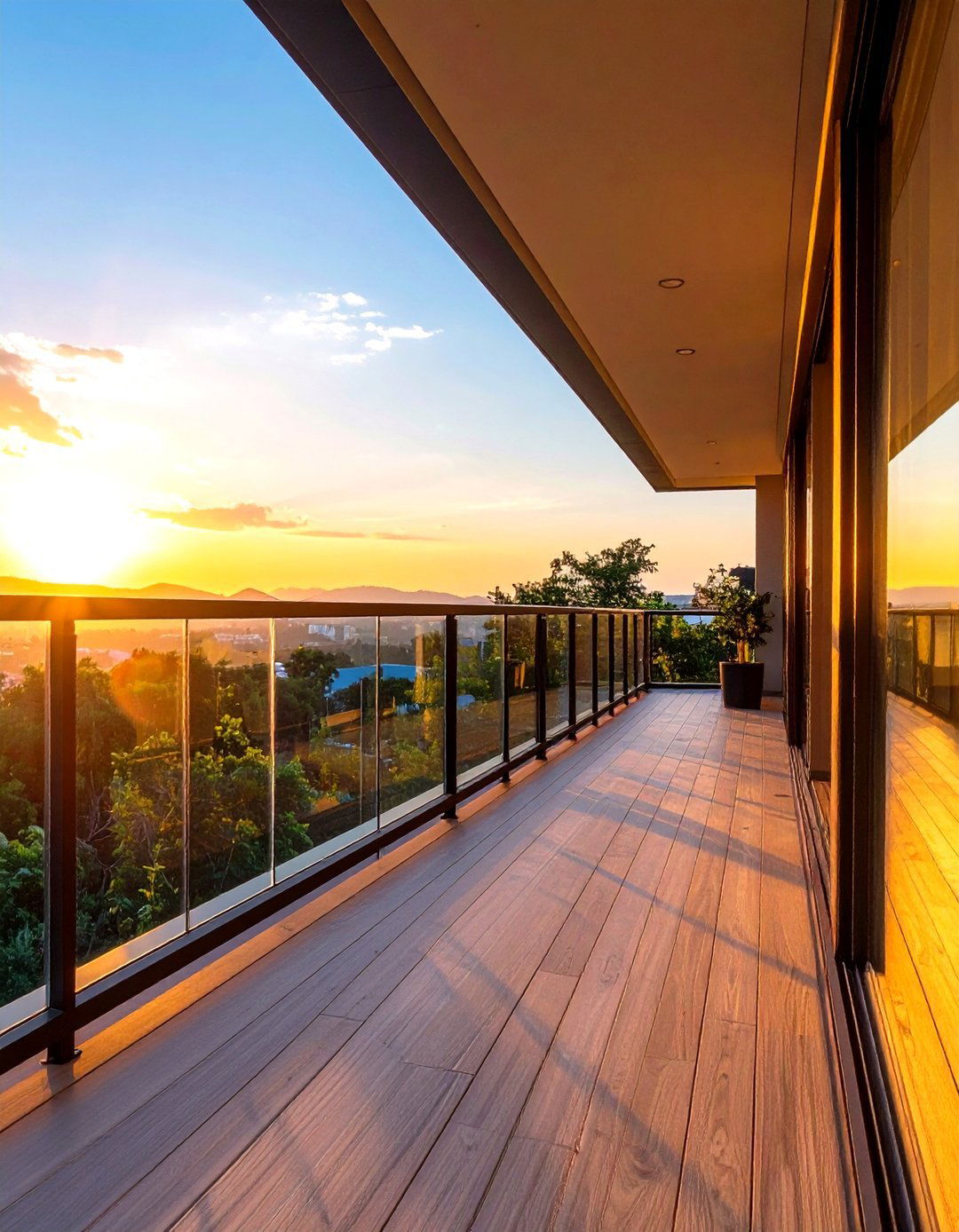
Laminating colored interlayers—amber, aqua, or smoky charcoal—turns the balustrade into a giant stained-glass panel that washes decks with tinted light. The PVB or EVA layer adds a second safety line: if one ply breaks, fragments remain bonded, maintaining a barrier until replacement. Impact tests rate laminated balcony glass higher for edge chip resistance and sound dampening, making vibrant hues both expressive and practical.
13. Hybrid Cable-and-Glass Rails for Breezy Transparency
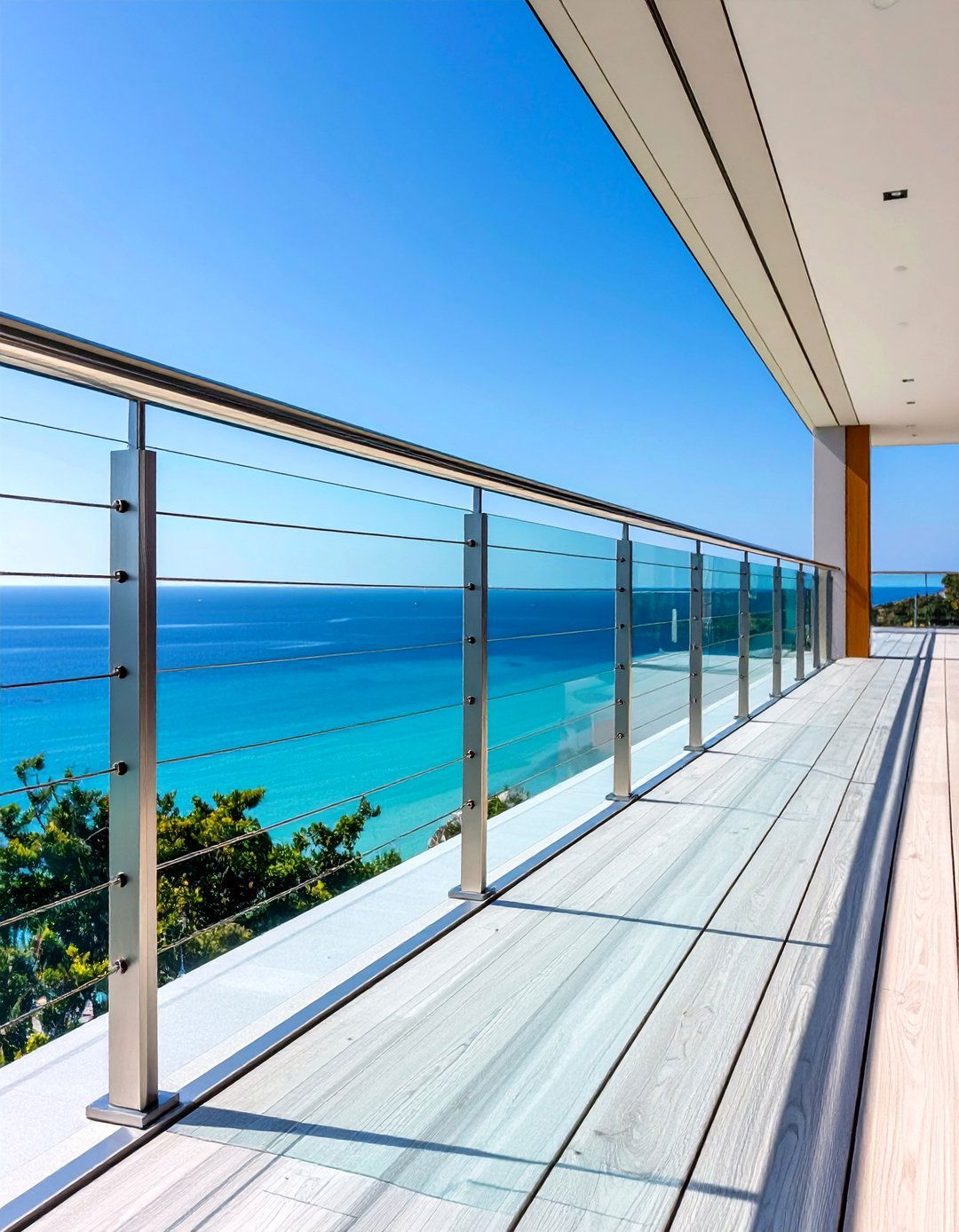
Combining horizontal stainless cables with partial glass inserts delivers airflow and kids-safe panels together. Cable zones frame the view while the glass corners block diaper-bag drop zones or pet escapes, yielding a lighter structure than full glazing. Recent custom builds report successful spans over five metres with minimal flex thanks to tensioned marine-grade wire terminations welded into steel or timber posts.
14. Double-Layer Laminated Safety Glass for High-Rise Assurance
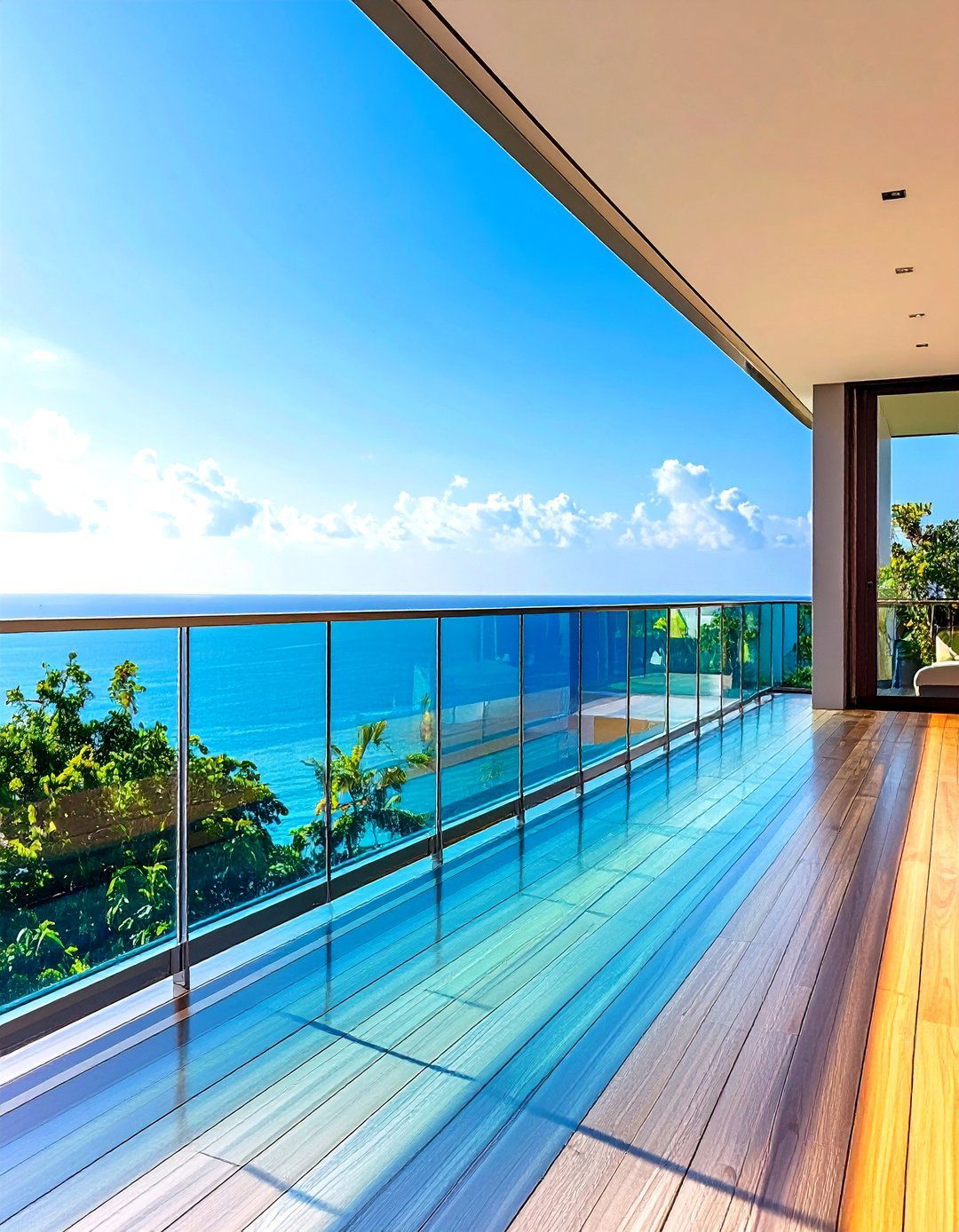
At greater heights, regulations often demand redundant barriers. Double-laminated assemblies sandwich two heat-strengthened lites and an interlayer, resisting wind pressures that single panes cannot. If outer glass breaks—say from storm-borne debris—the inner ply remains intact, averting hazards below. Interlayers can be acoustic or UV-blocking, so residents gain a quieter balcony and prolonged furnishing life.
15. Built-In Seating Ledge that Bonds with the Balustrade
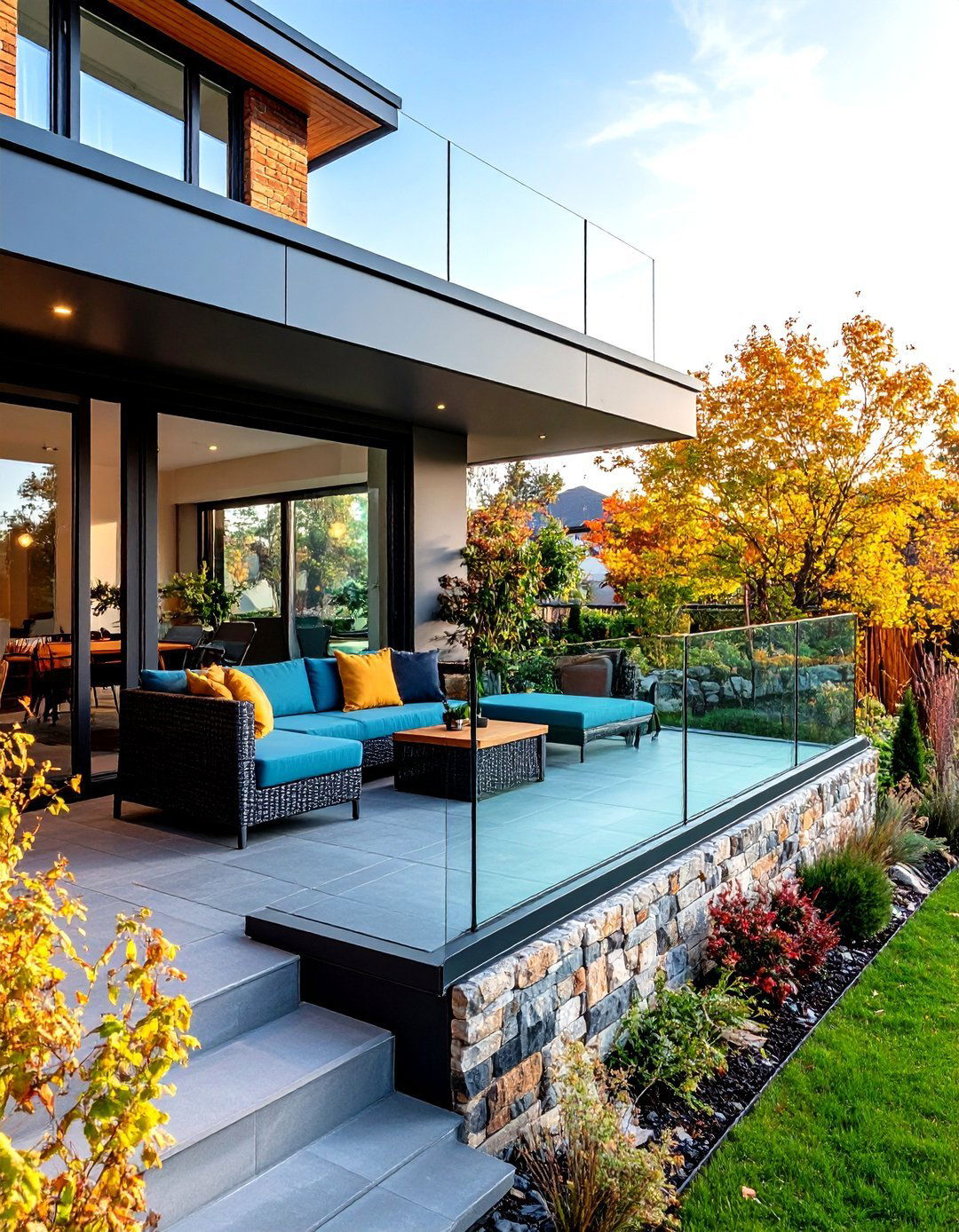
Looking for space-savvy comfort? A low masonry wall capped with a laminated glass screen forms both a bench backrest and code-compliant guard. Integrated ledges anchor cushions that never blow away, and the solid base lets you conceal storage or planter irrigation. Designers of compact city balconies use this hybrid to seat four without a single loose chair clogging precious square footage.
16. Glass Windscreen Panels for Blustery Sites

Coastal towers and hilltop villas benefit from taller, softly-tinted glass posts that break gusts while preserving panoramic appeal. Modular windscreen kits slide into aluminum channels or clip to steel uprights, enabling heights up to 1.8 m. Homeowners note comfortable conversations at 15 km/h winds where open rails once scattered napkins across the neighborhood—proof that clear barriers can tame microclimates without walls.
17. Bird-Safe UV Pattern Glass to Protect Wildlife
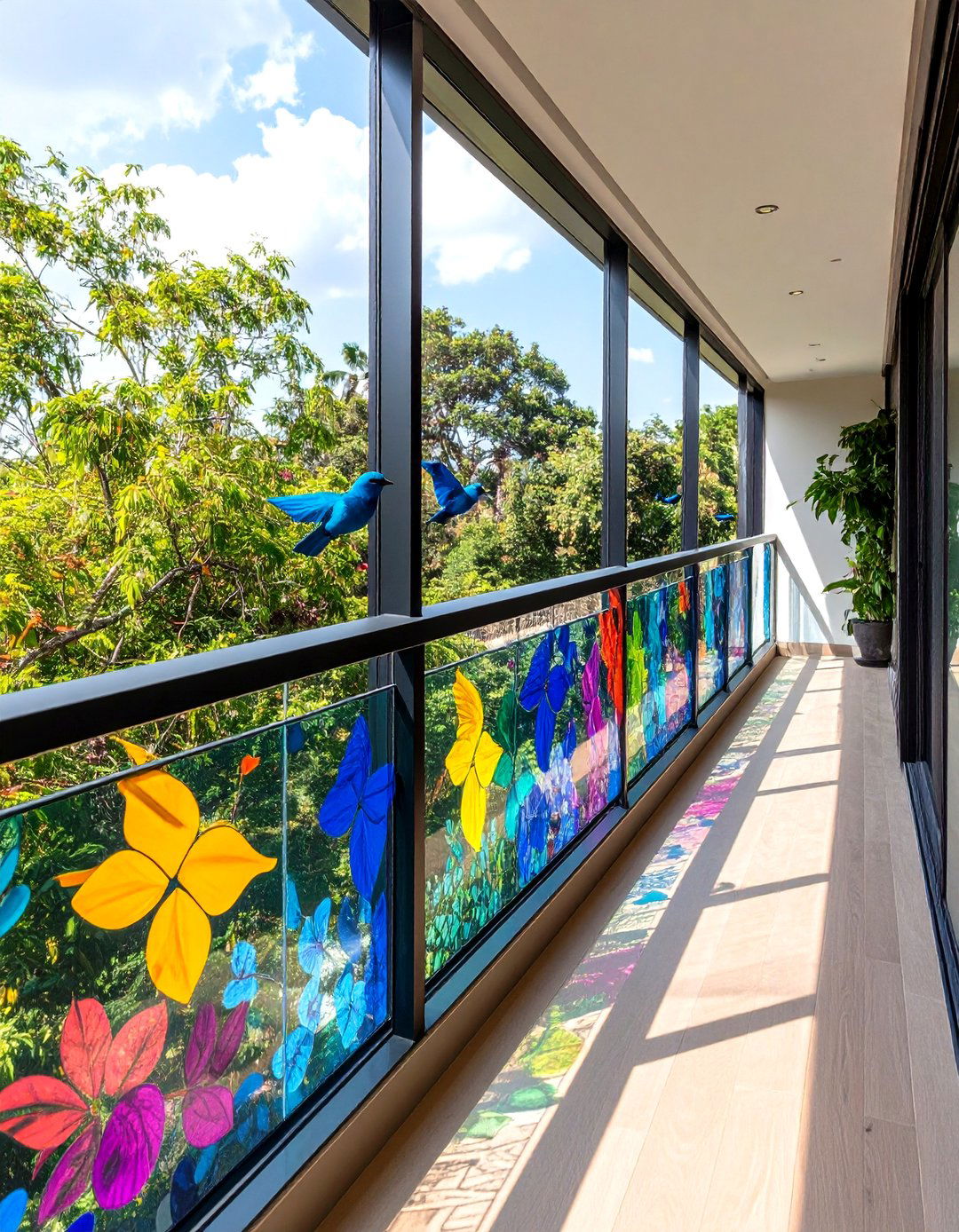
Standard clear panes confuse birds, but microscopic UV stripes visible only to avian eyes warn them away. Laboratory trials and real-world façade audits confirm collision reductions exceeding 90 % when balcony glass uses UV-reflective patterns spaced five centimetres apart. The coating remains invisible to humans, so sunsets stay pristine while migratory routes stay safe.
18. Photovoltaic Glass Balustrade for Energy-Positive Living
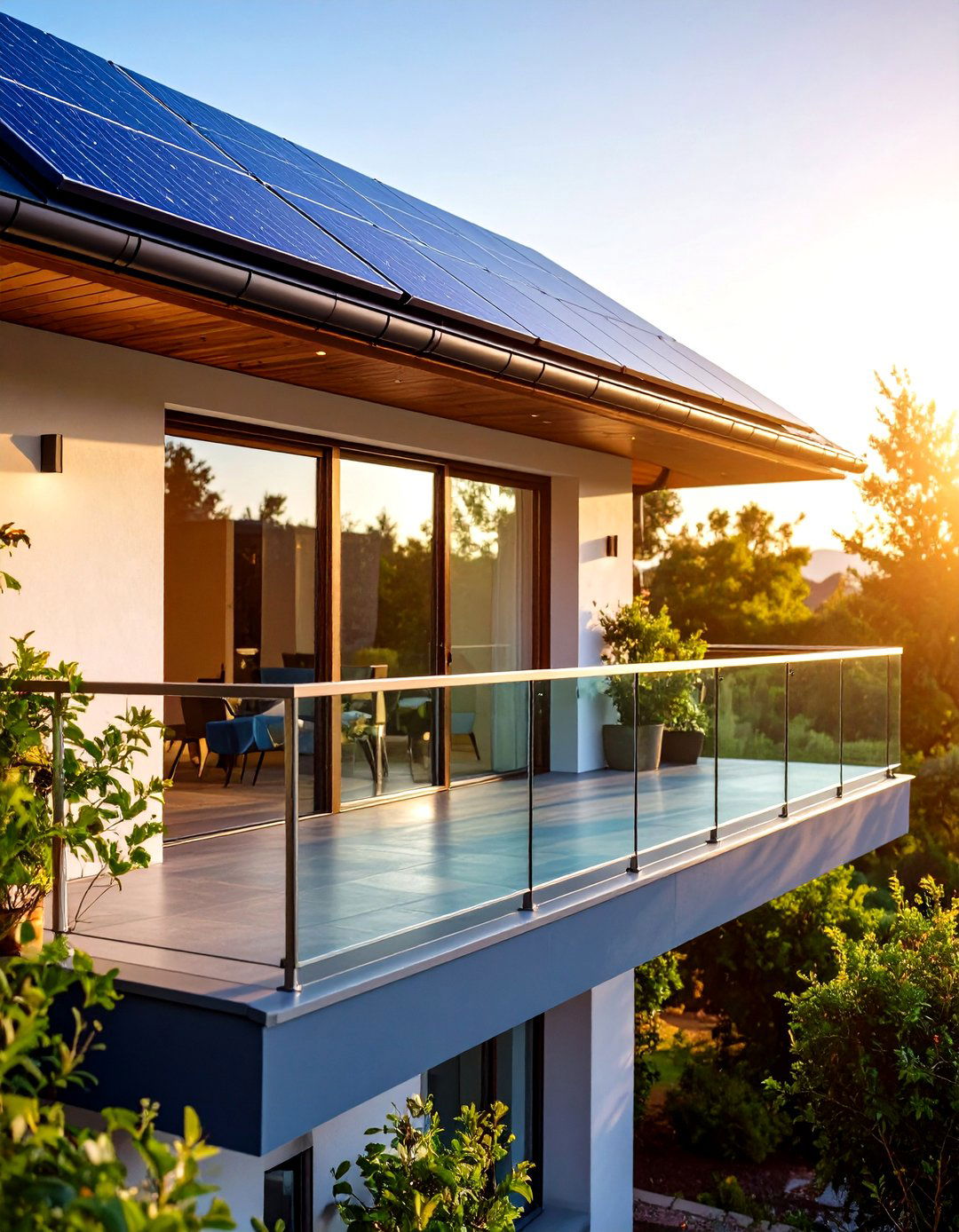
Transparent solar cells embedded in balcony panels harvest daylight to feed building batteries or common-area lighting. Pilot installations have generated dozens of kilowatt-hours yearly per unit, making balconies active power stations instead of passive appendages. Developers tout lower operational carbon and marketing buzz, while residents enjoy subtle shading and tech cachet. Installers route wiring discreetly through post cavities, so aesthetics remain uncompromised.
19. Black-Framed Glass for Industrial-Loft Character

Slim matte-black aluminum or steel frames wrap glass panes, echoing warehouse windows and pairing well with exposed brick or concrete. Powder-coated uprights resist chipping, and darker tones minimize dirt visibility—useful in smoggy urban contexts. Because the frame bears most loads, thinner glass can be employed, shaving weight on retrofit balconies. Accent the look with Edison string lights or cast-iron stools for full loft flair.
20. Retractable Glass Balcony Enclosures for All-Season Use
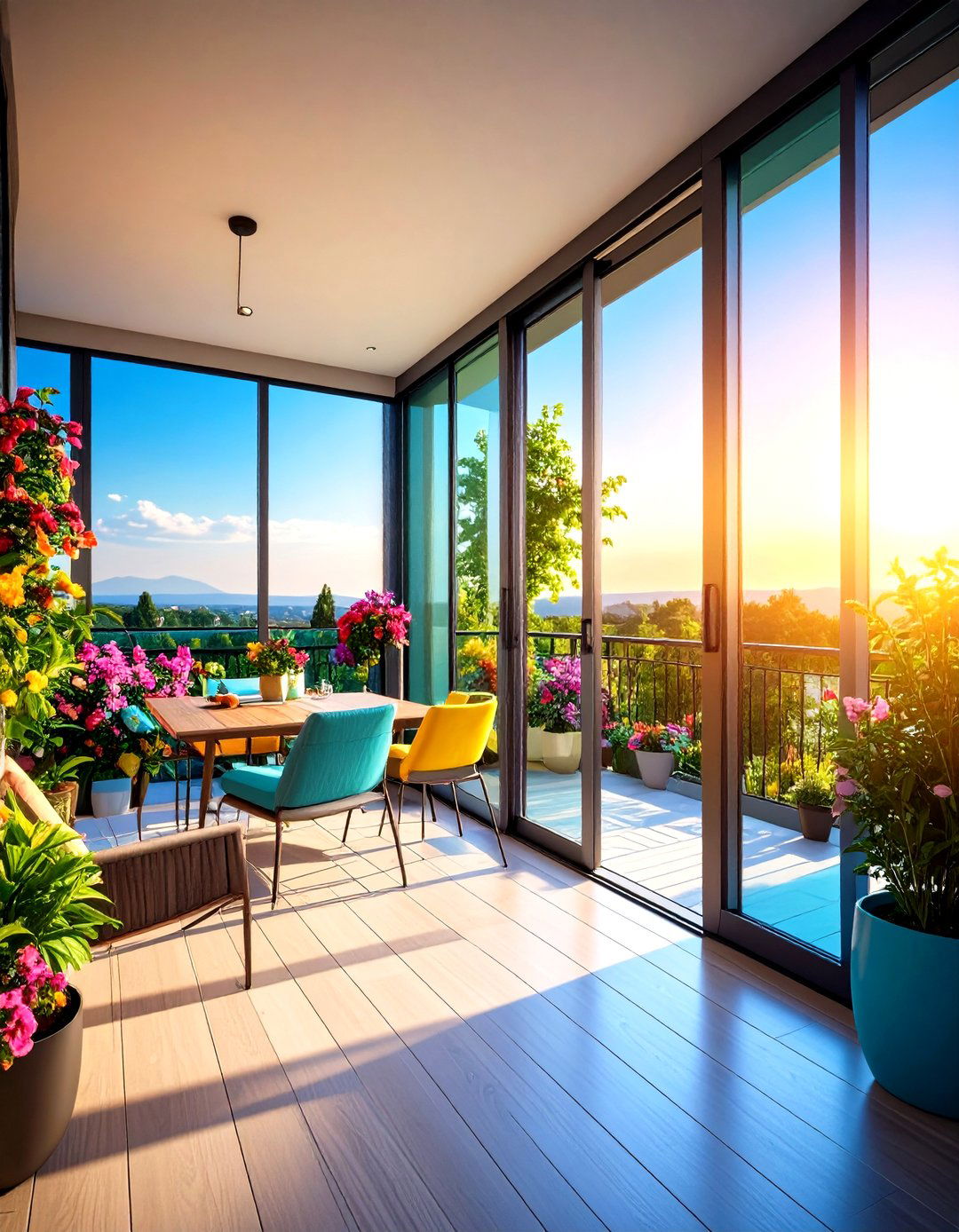
Finally, consider motorized or folding glass walls that slide upward or aside, sealing the balcony into a sunroom when temperatures dip and reopening it on breezy evenings. Seal gaskets meet weather-strip standards, and double-glazed glass maintains comfort down to freezing. Homeowners report doubling usable floor space for dining, yoga, or guest overflow without altering the building footprint—a transformative upgrade that earns its keep every shoulder season.
Conclusion:
Glass balcony design has evolved from simple clear rails into a toolbox of privacy tech, renewable energy, wildlife stewardship, and climate resilience. Whether you crave frameless expanses, smart-switch privacy, or a power-generating balustrade, today’s options let you tailor views, safety, and sustainability in one elegant sweep of glass—proof that the right railing can be as dynamic and future-ready as the panorama it frames.


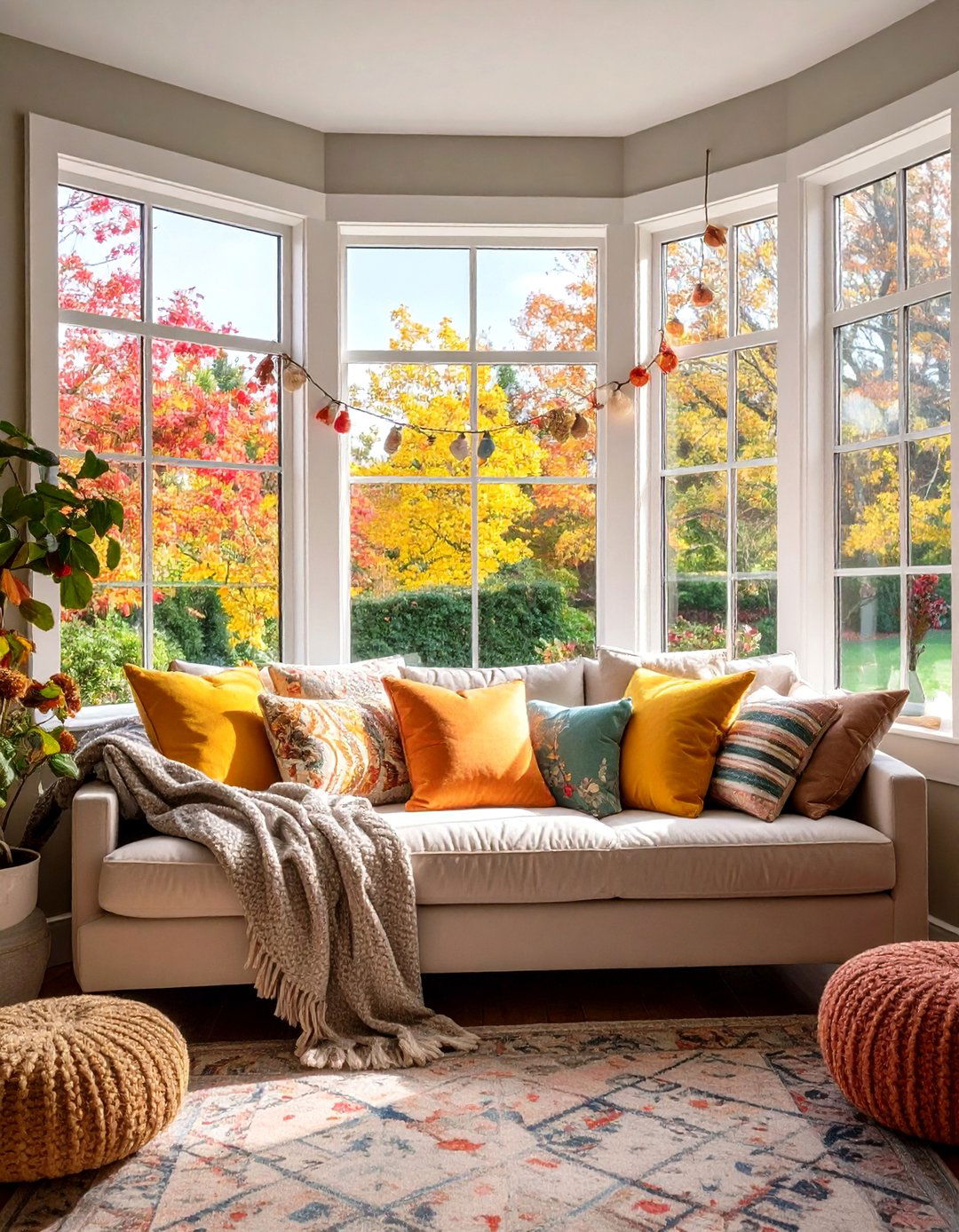
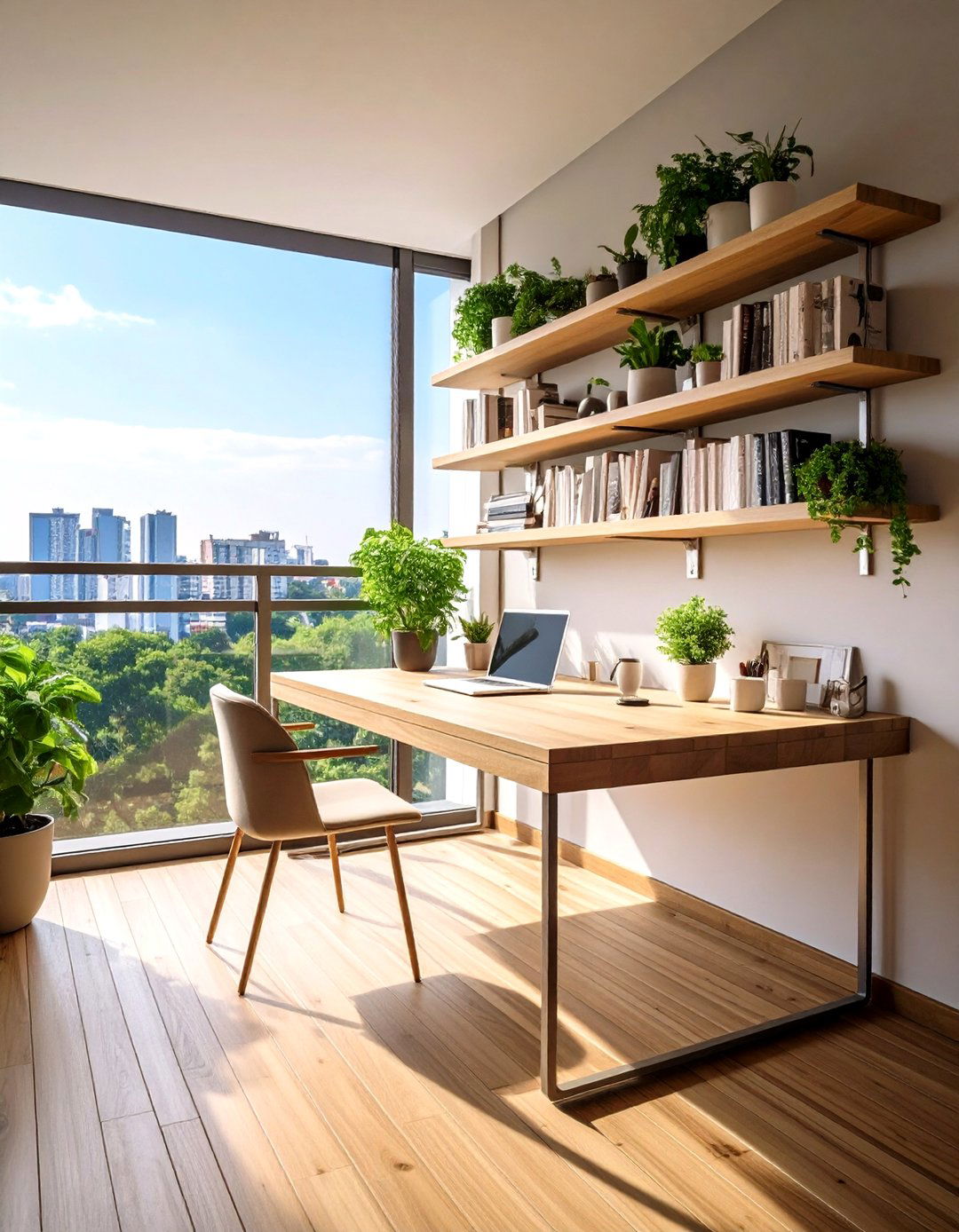
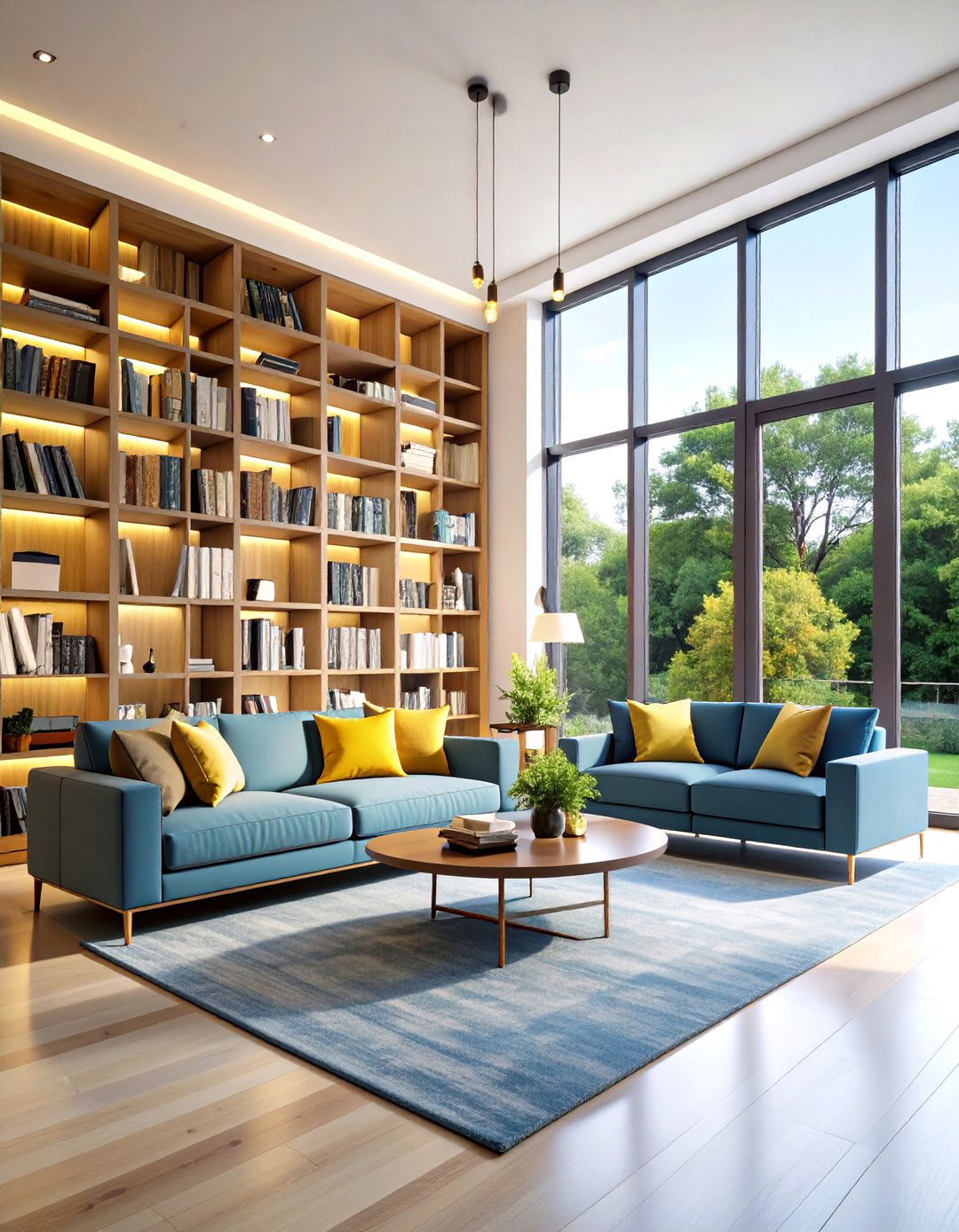
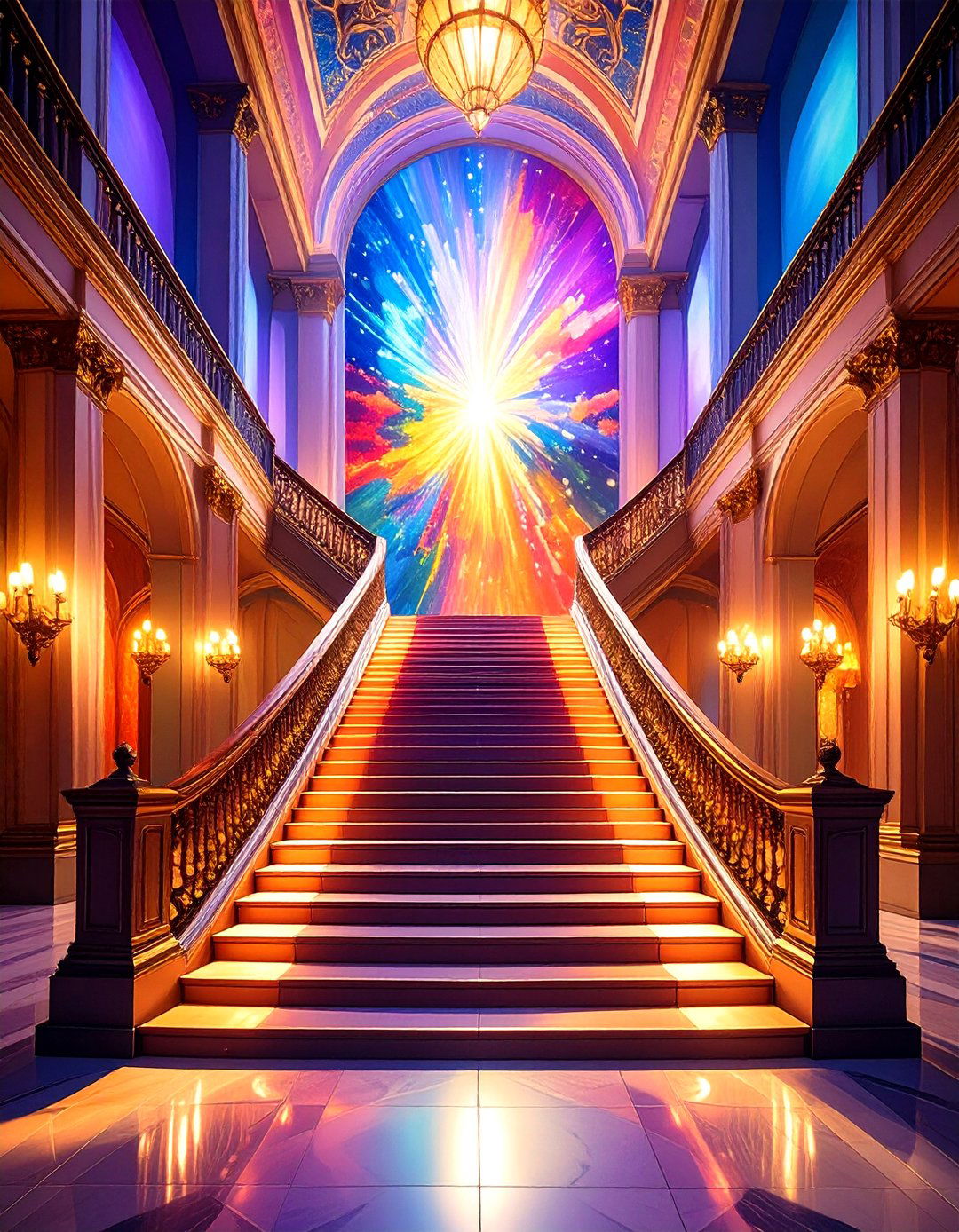
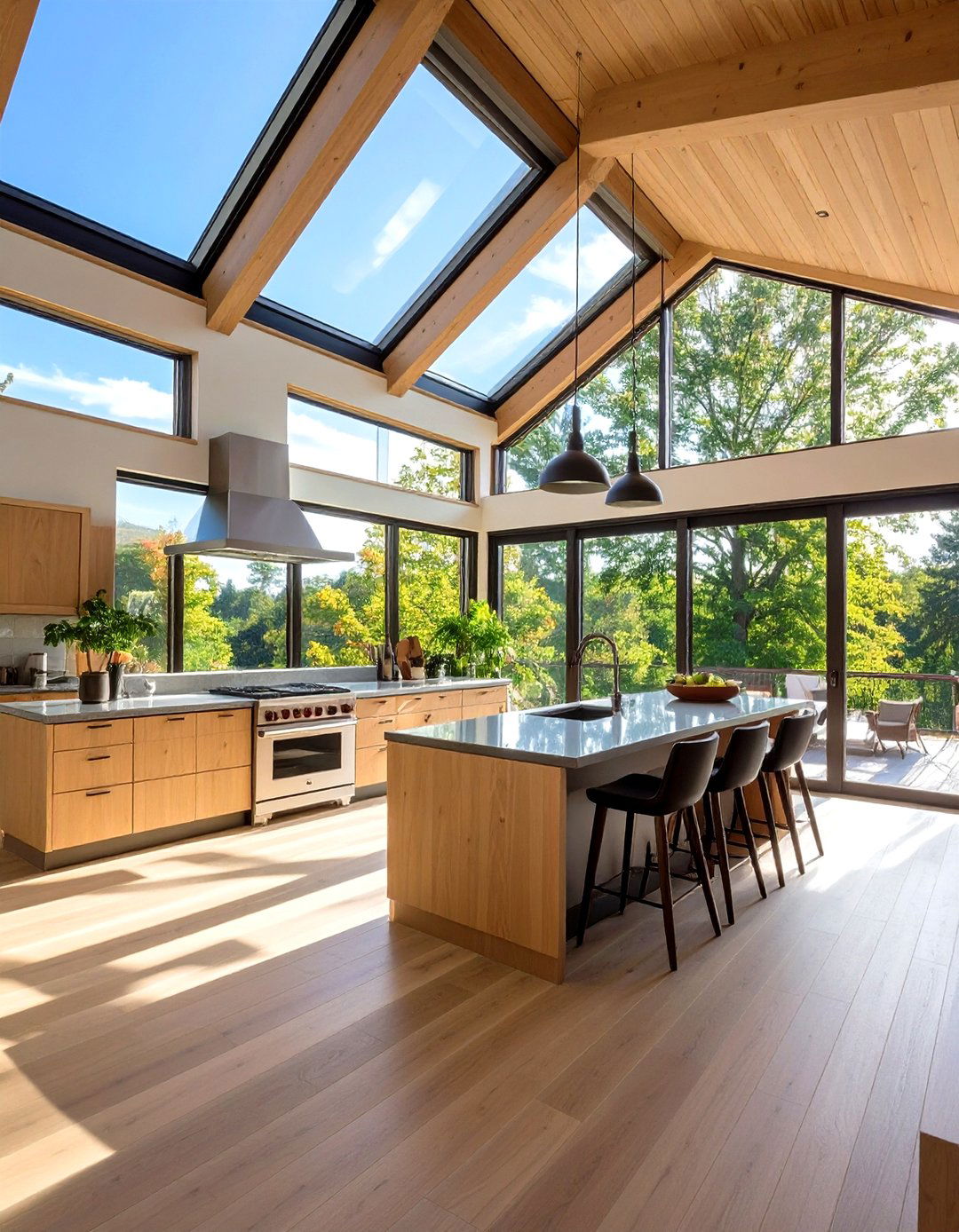
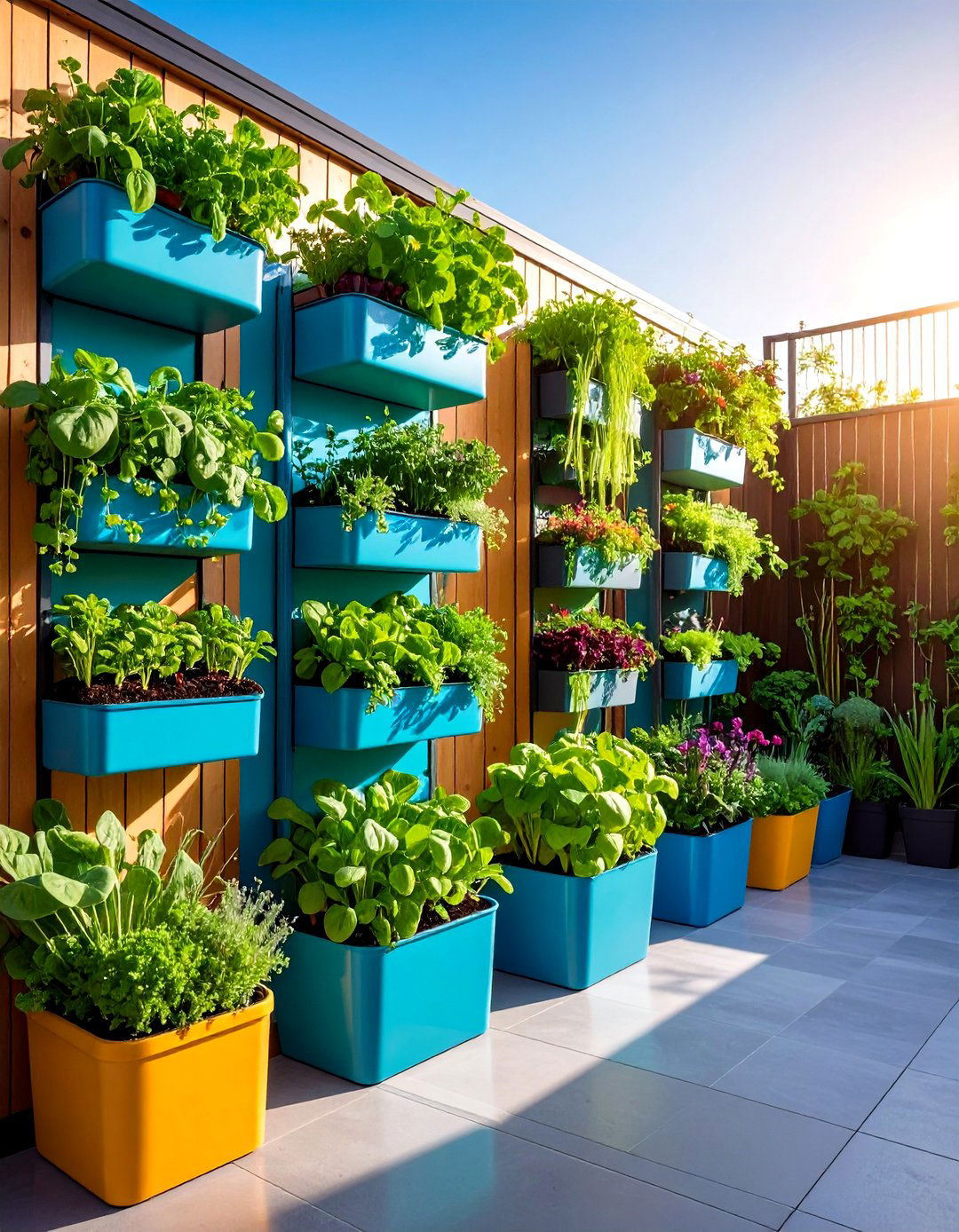
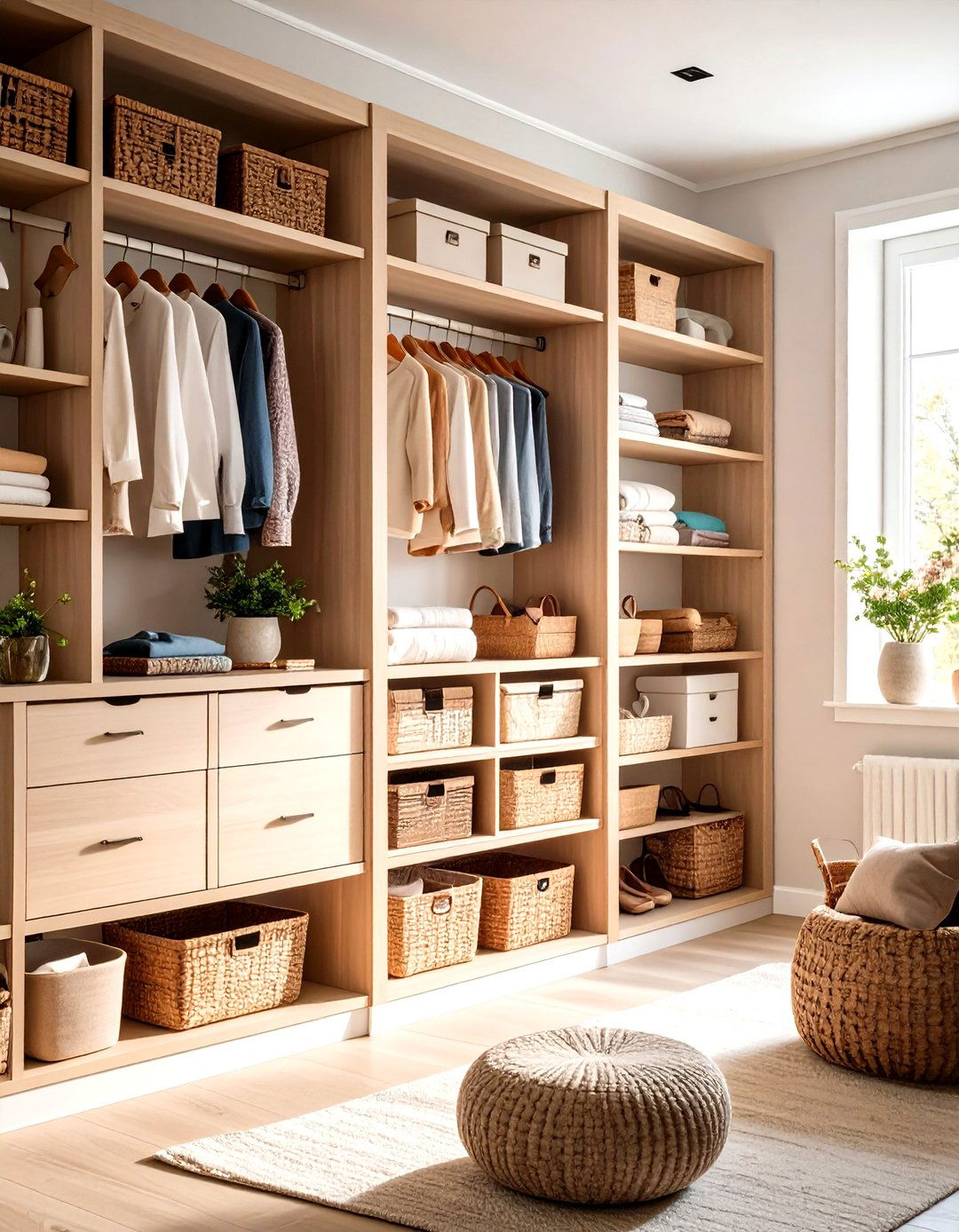
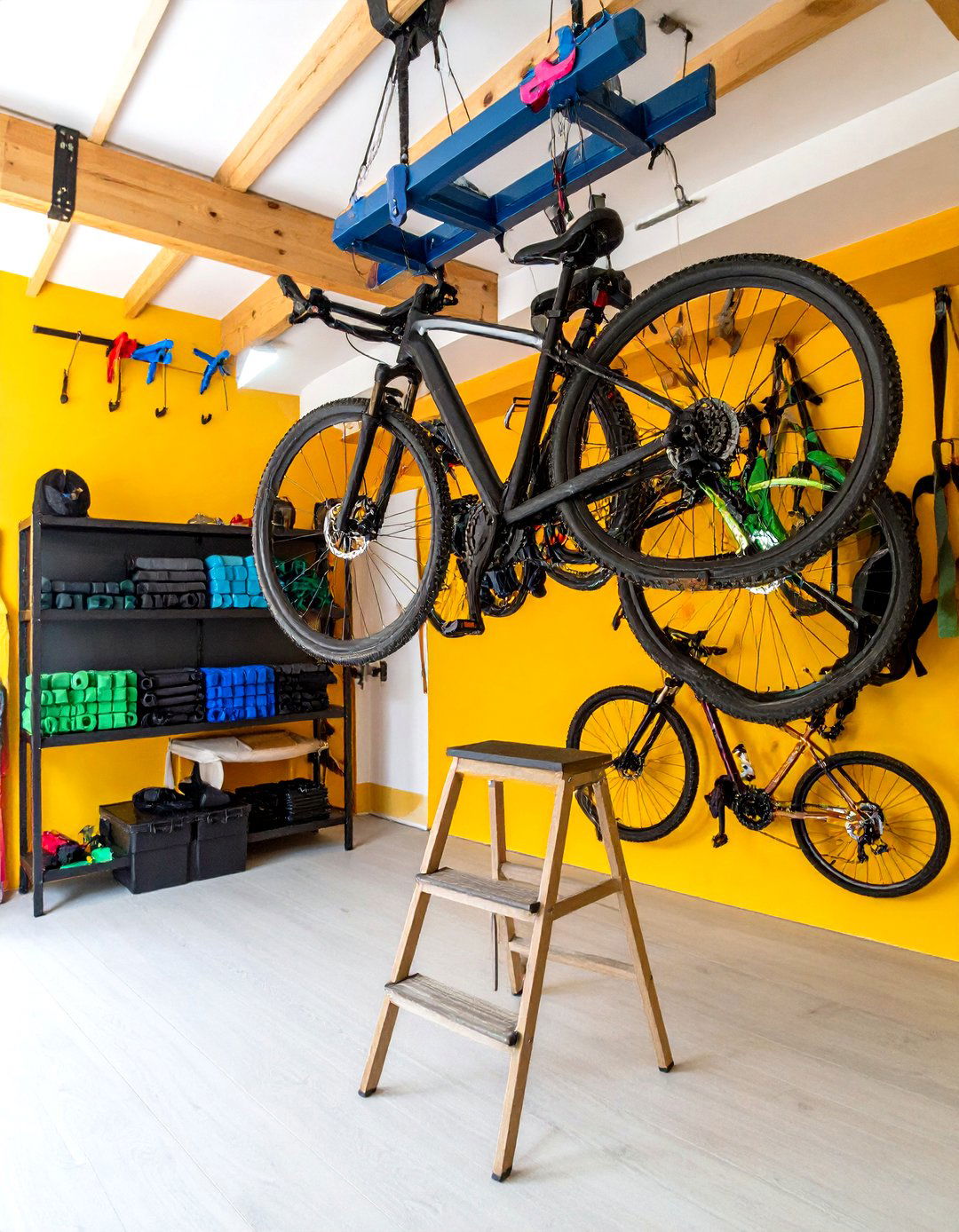
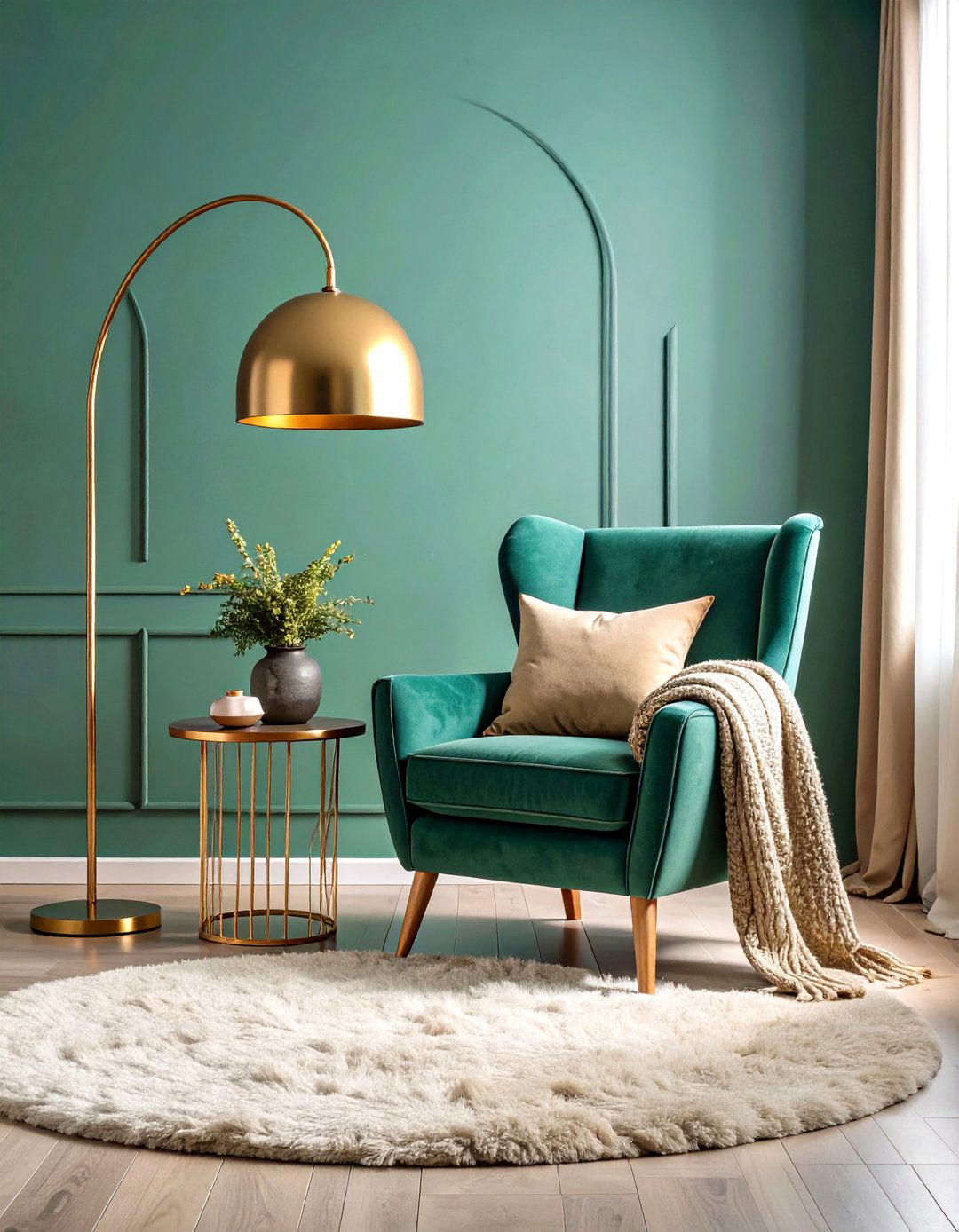
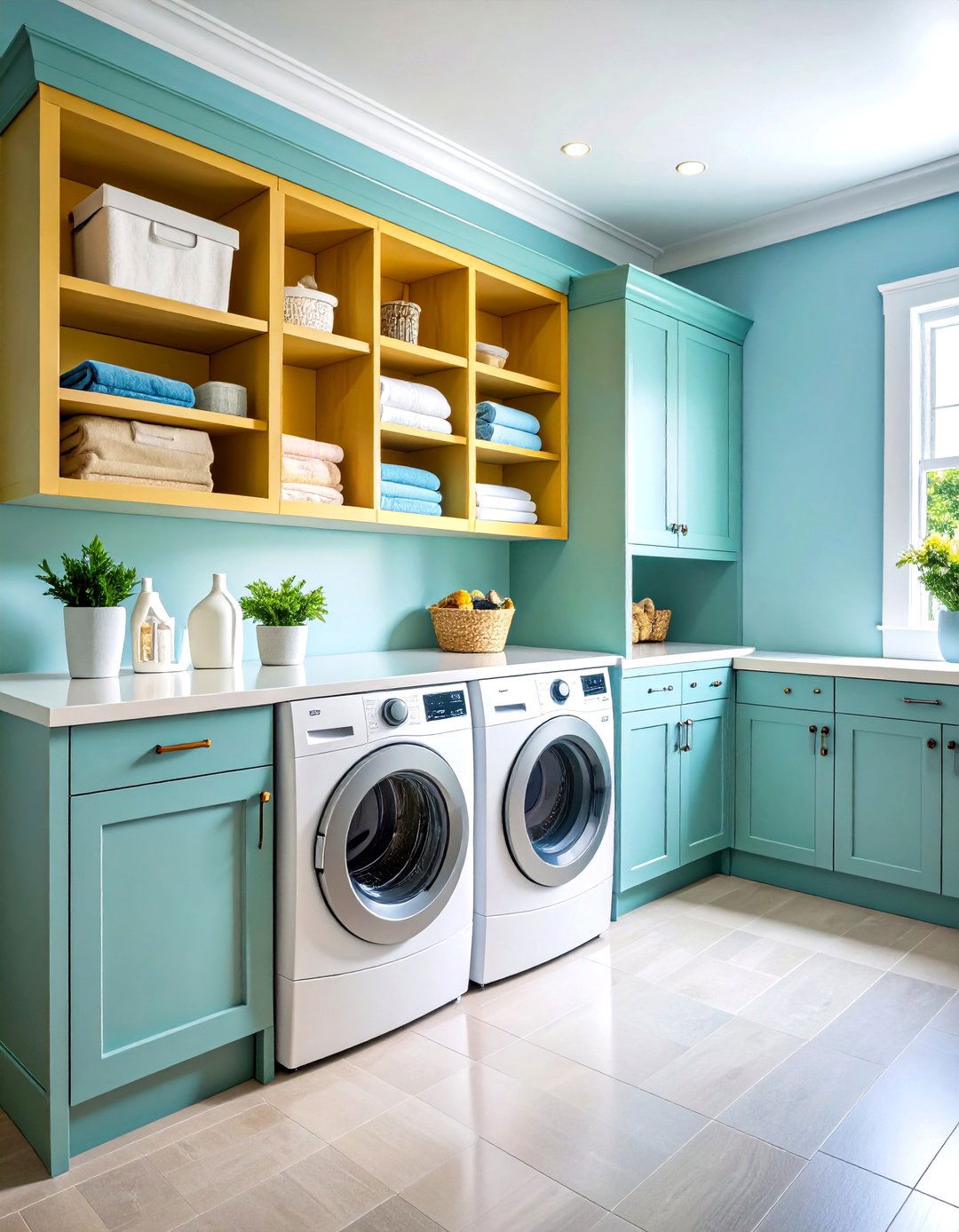
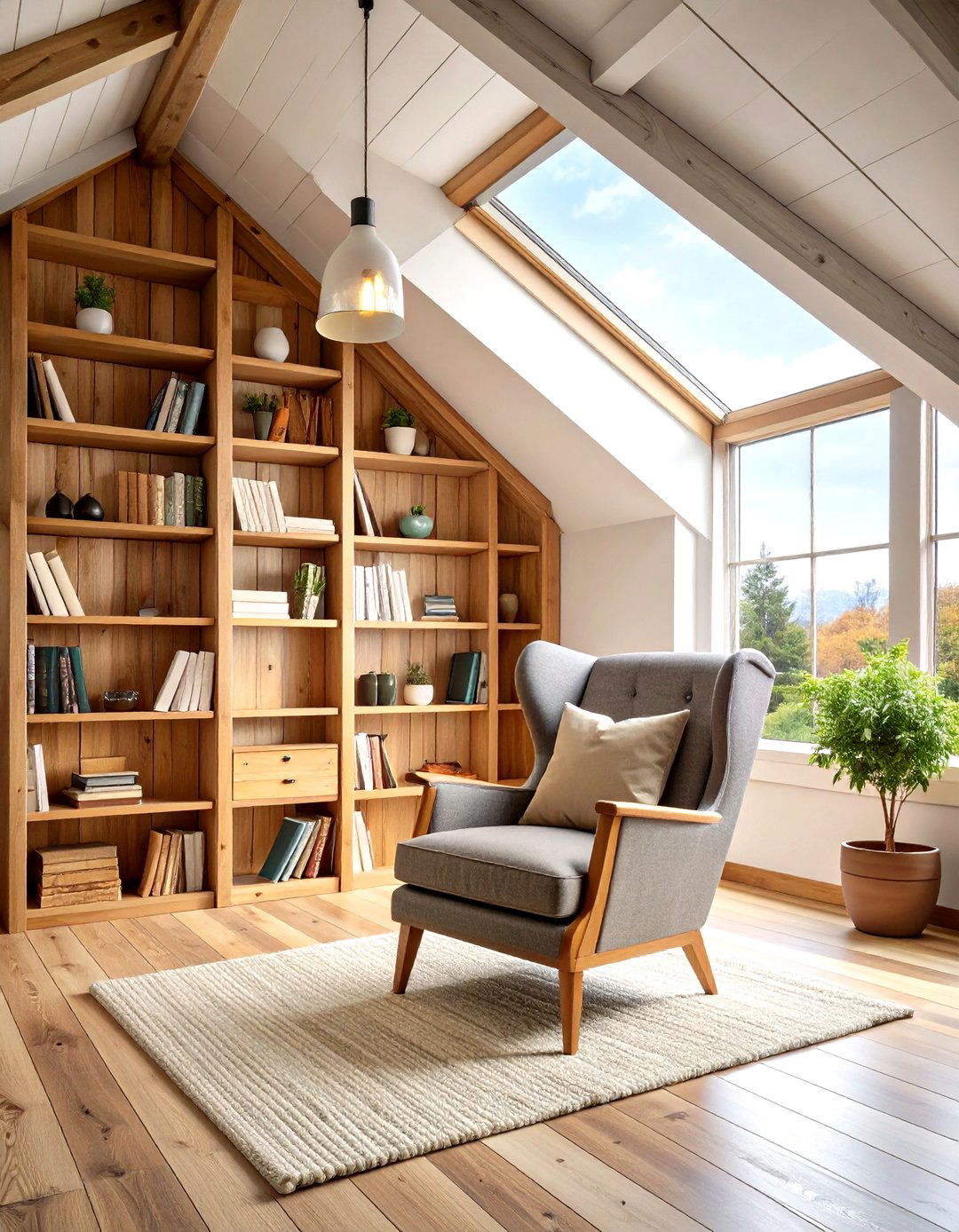
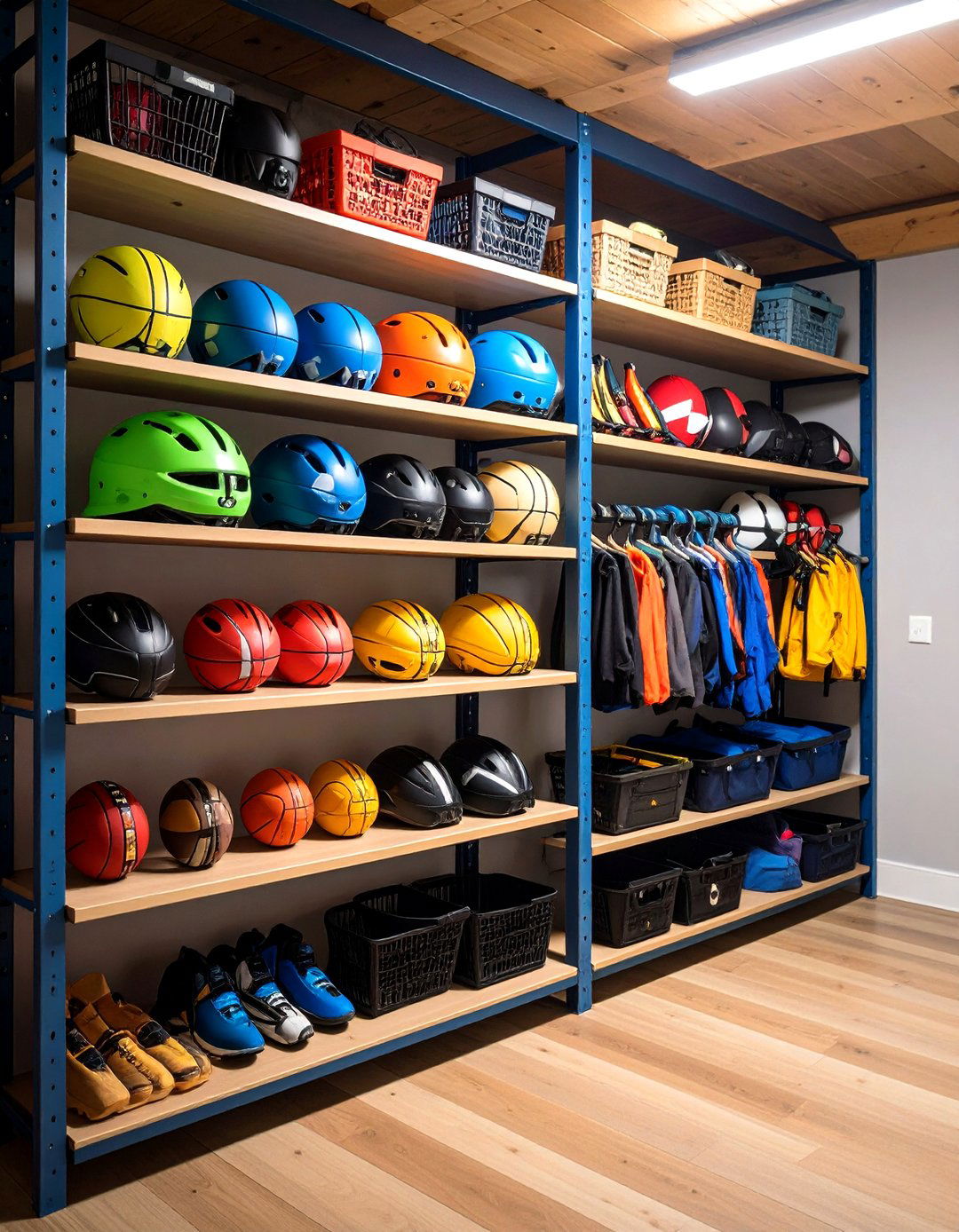
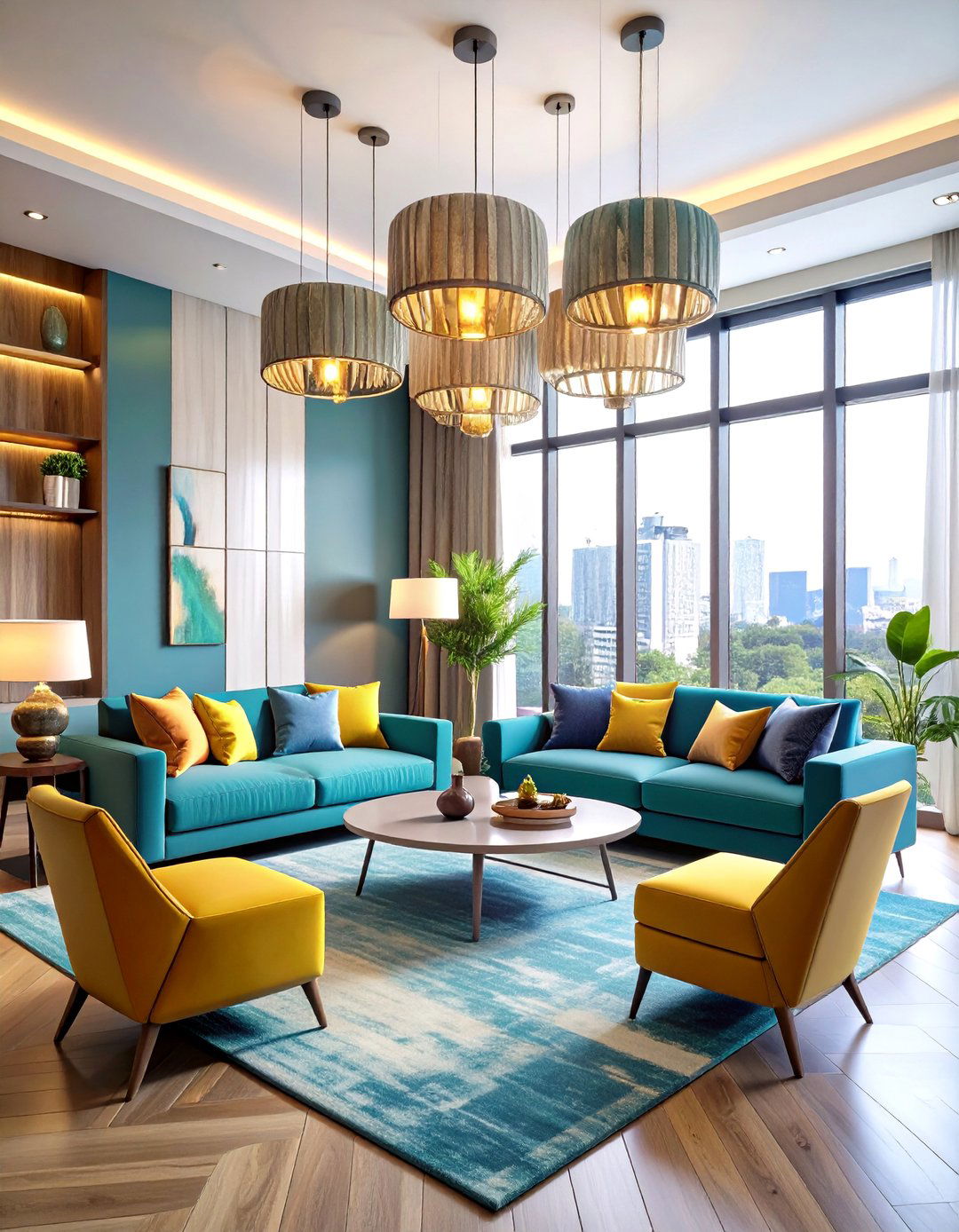
Leave a Reply